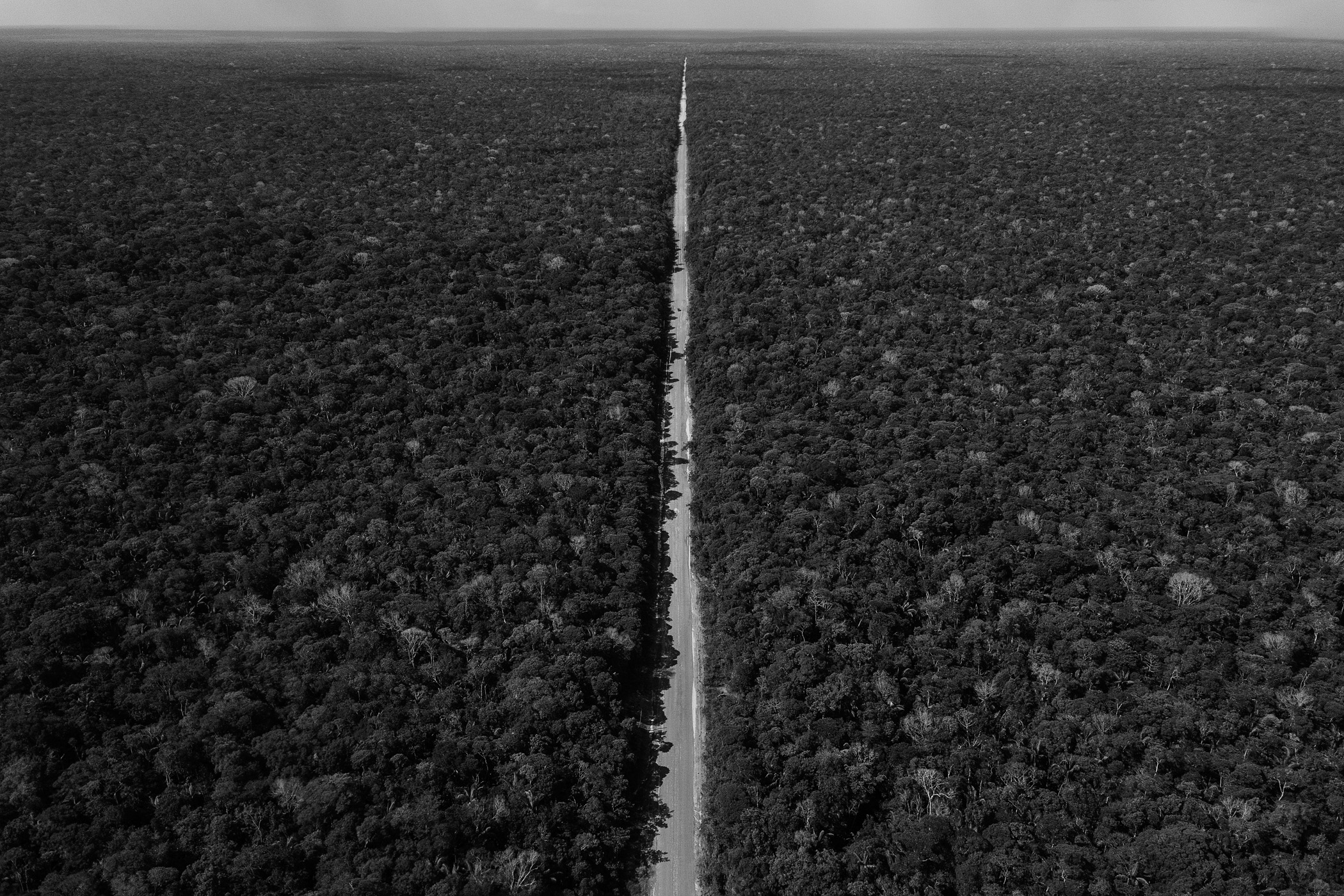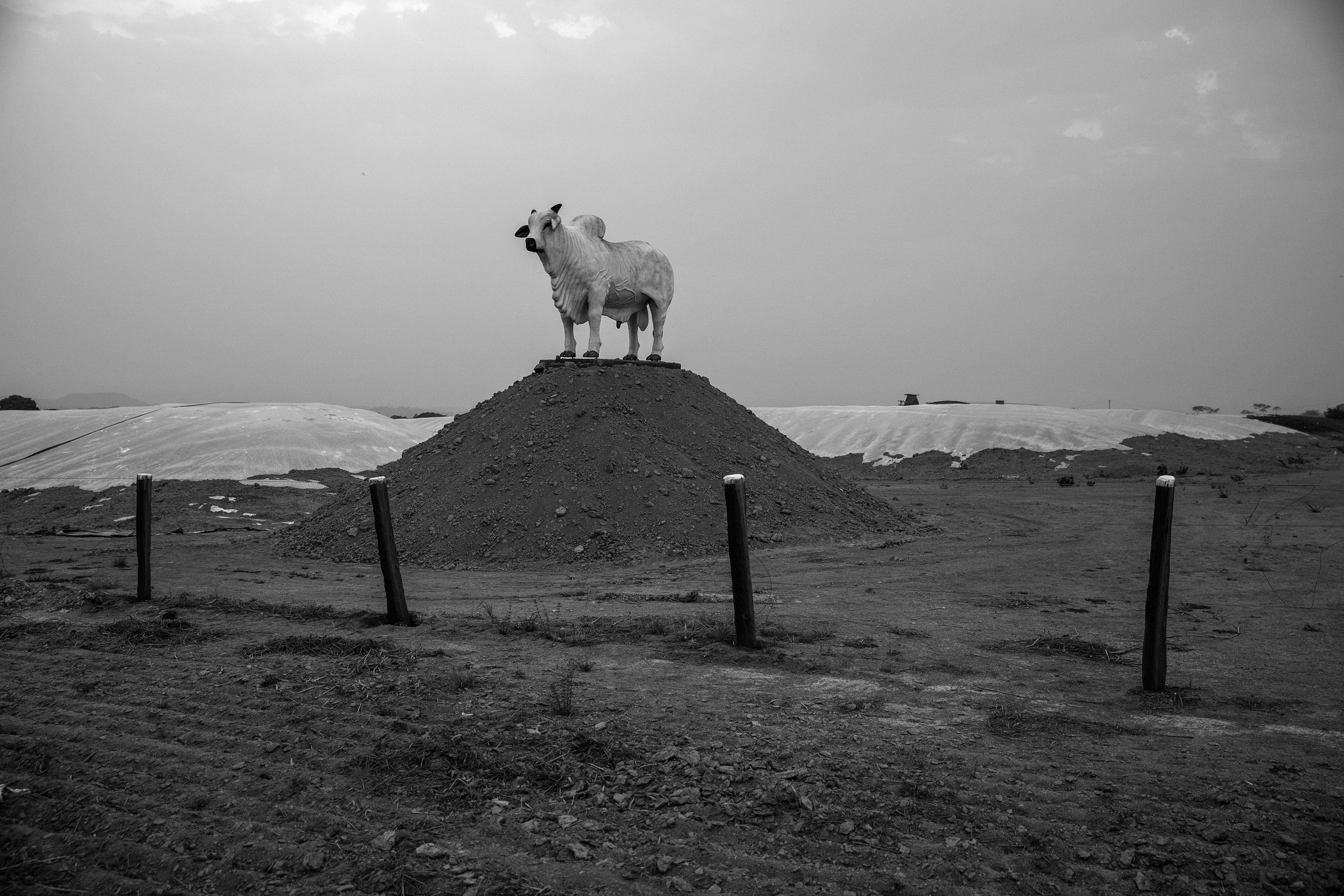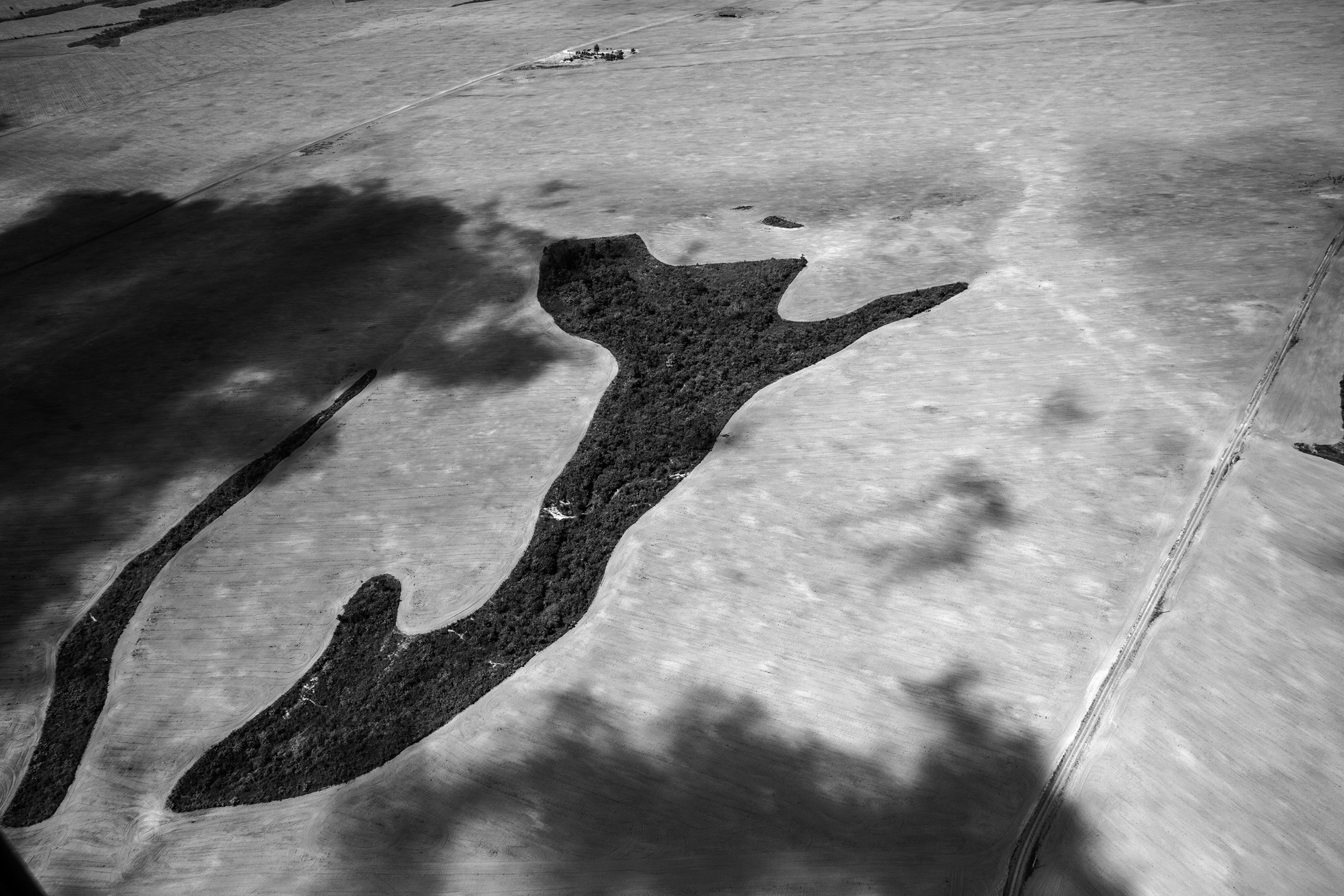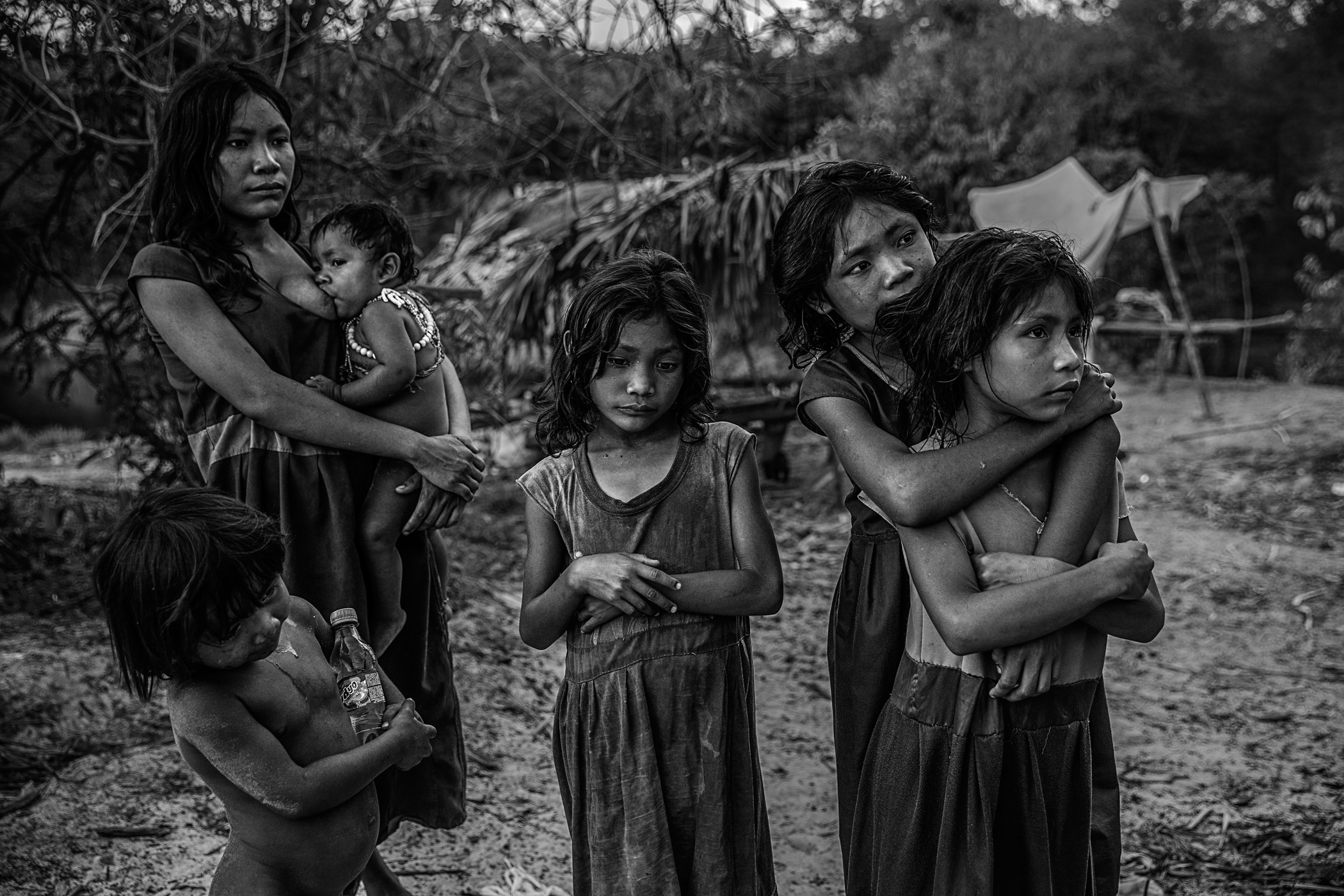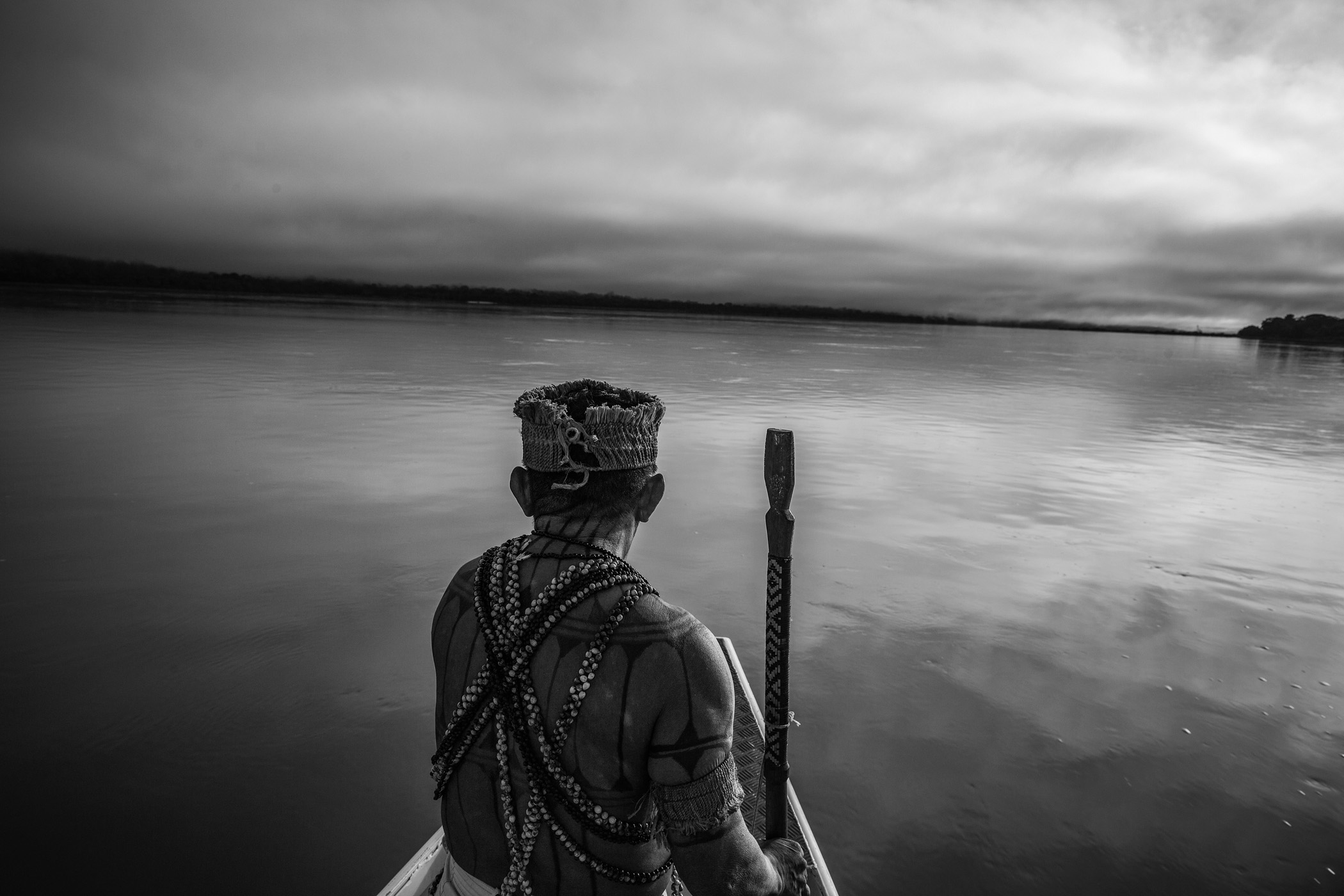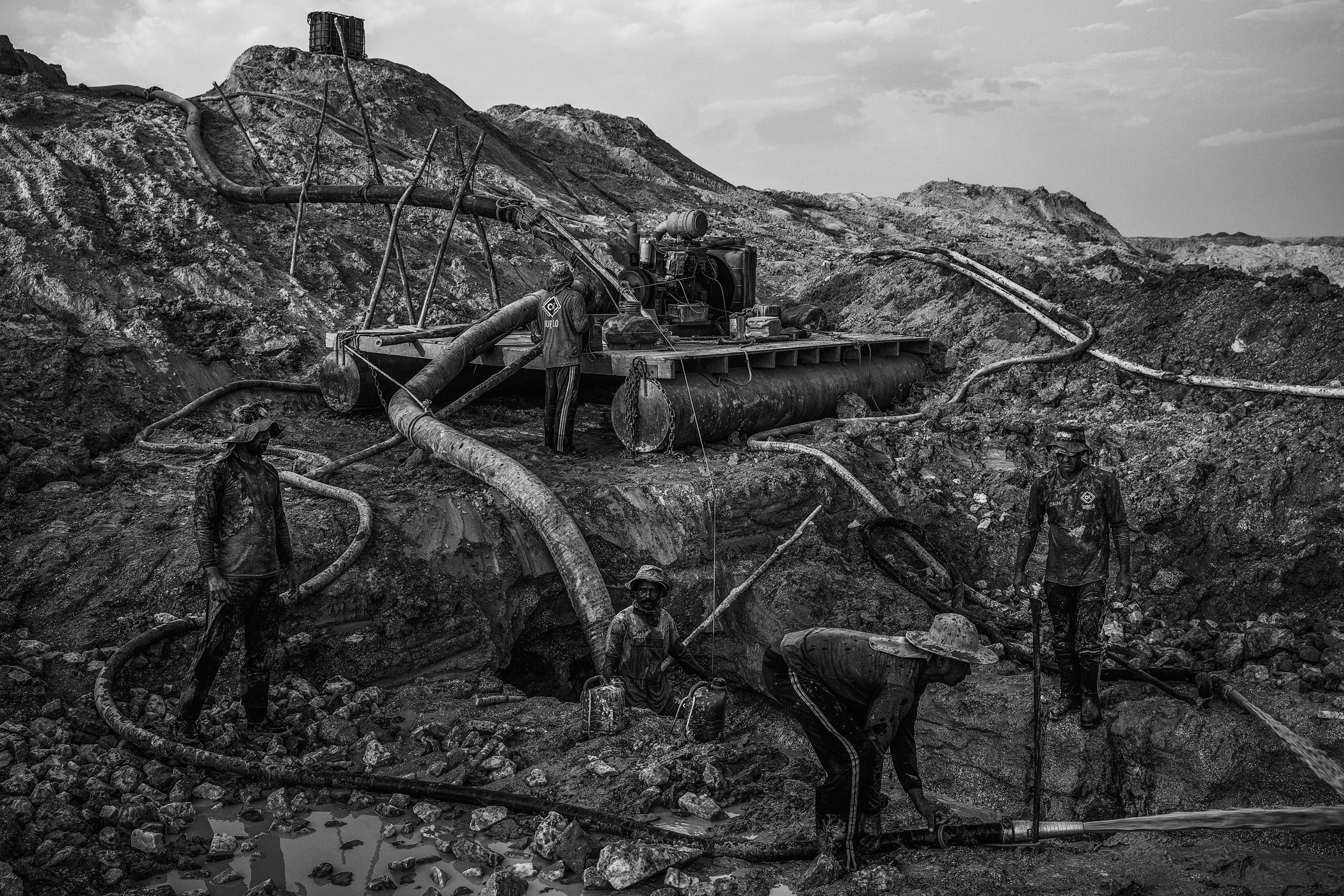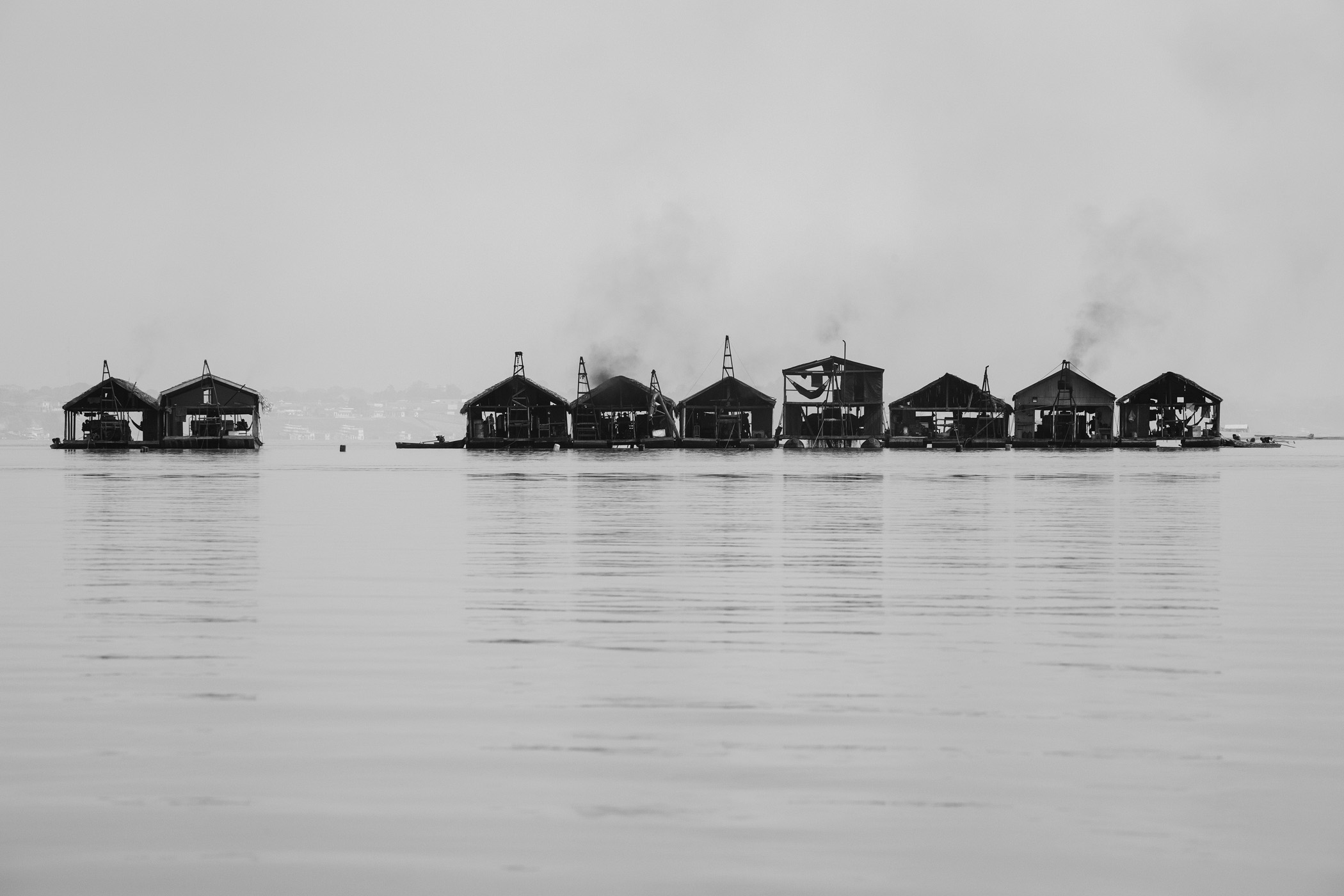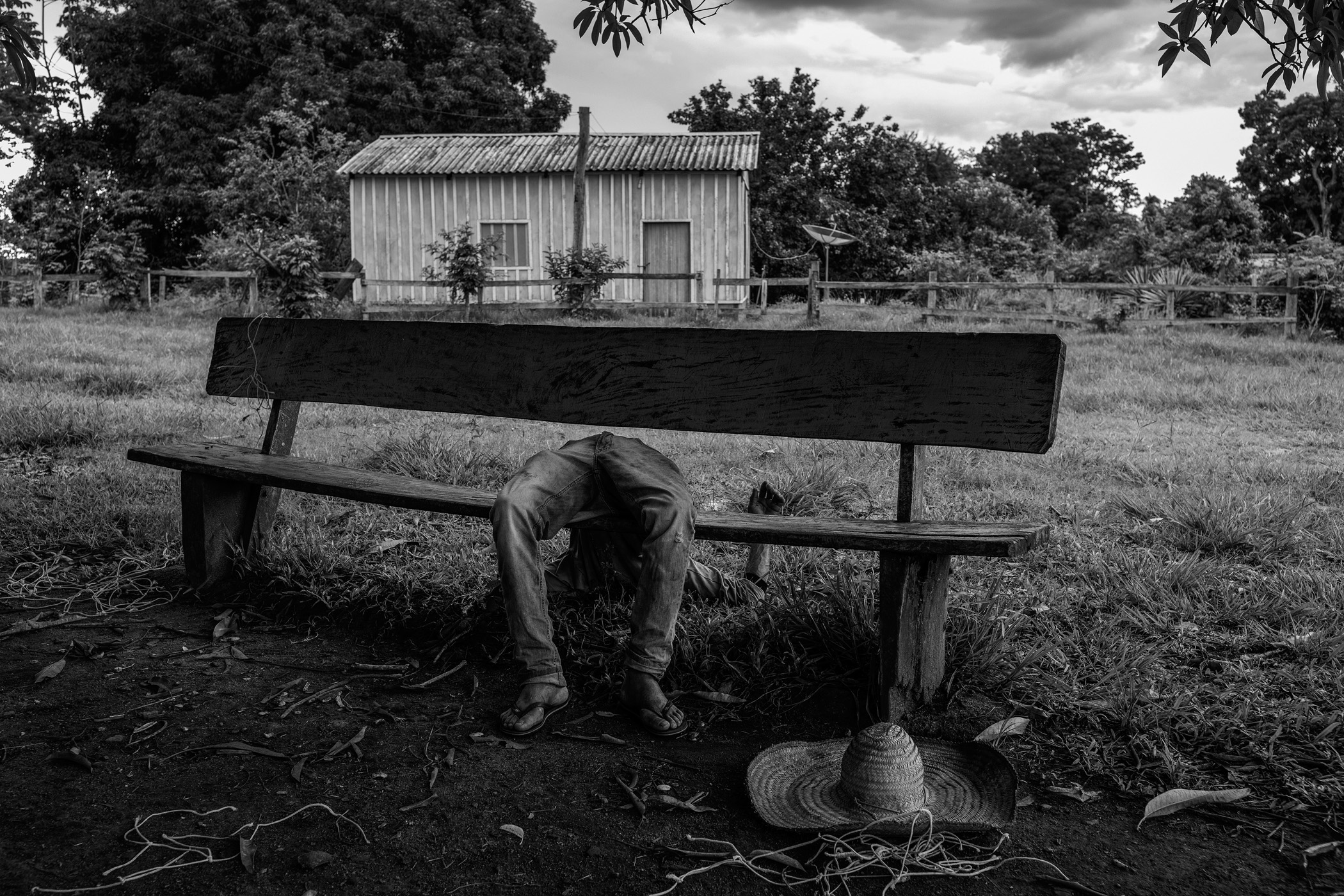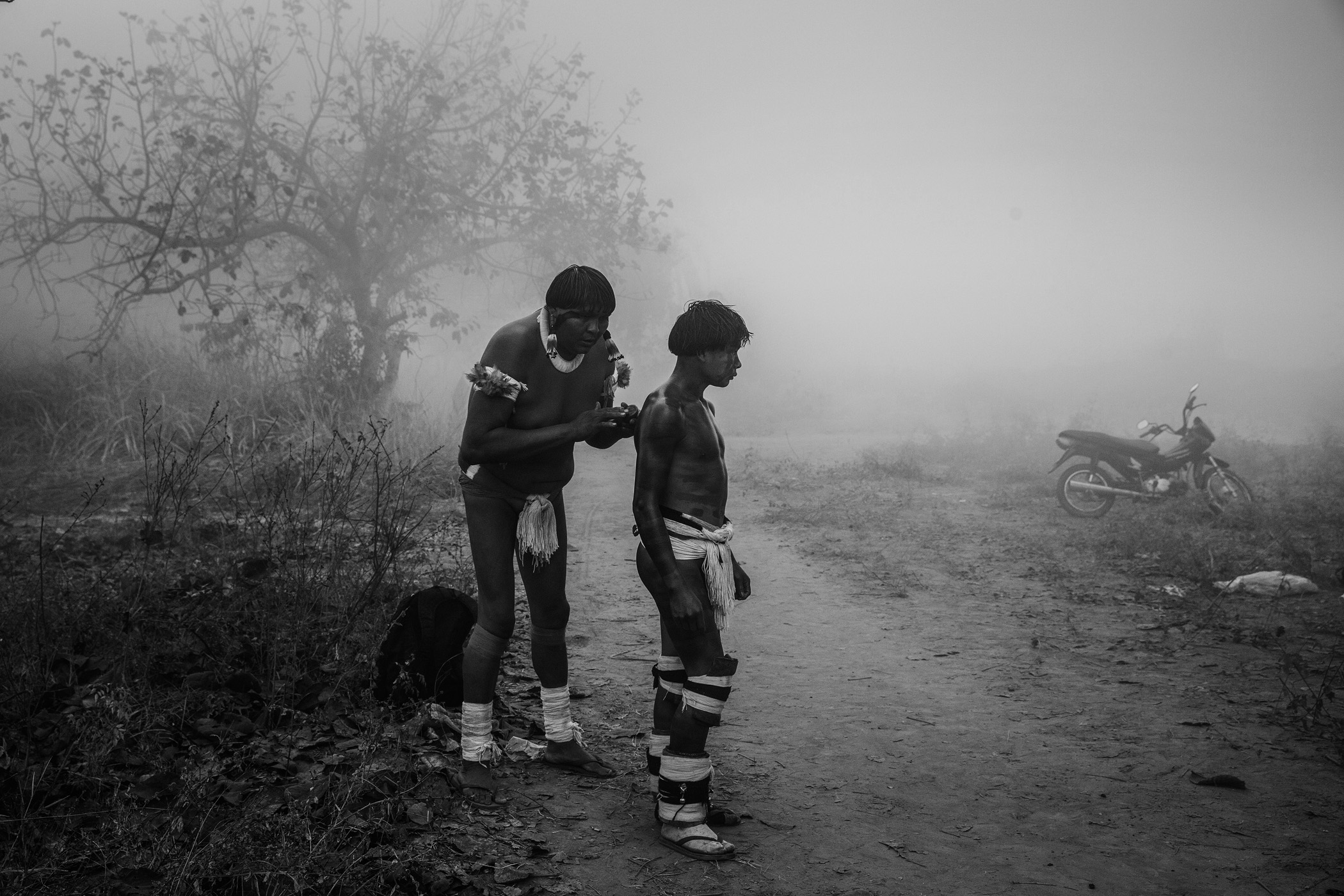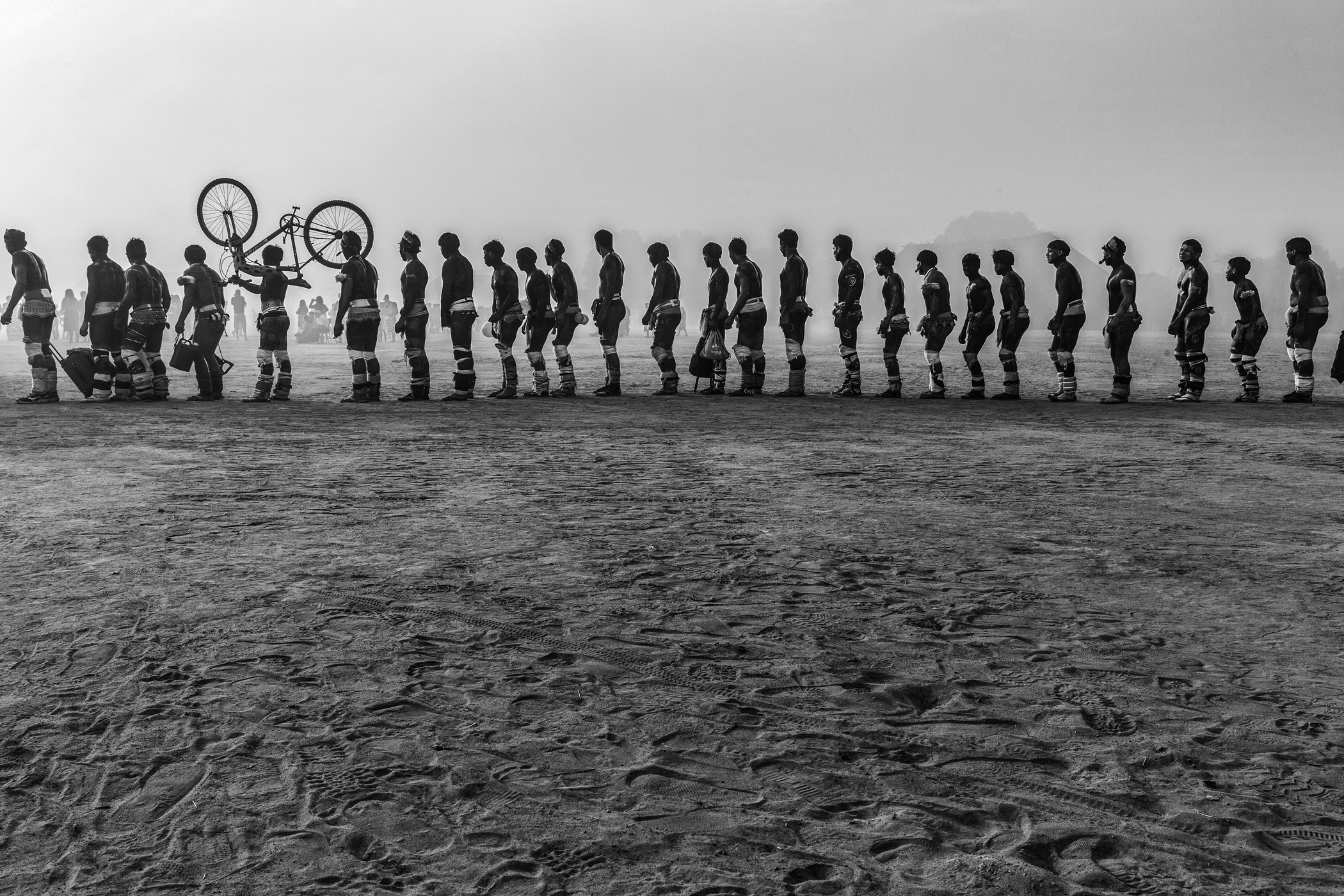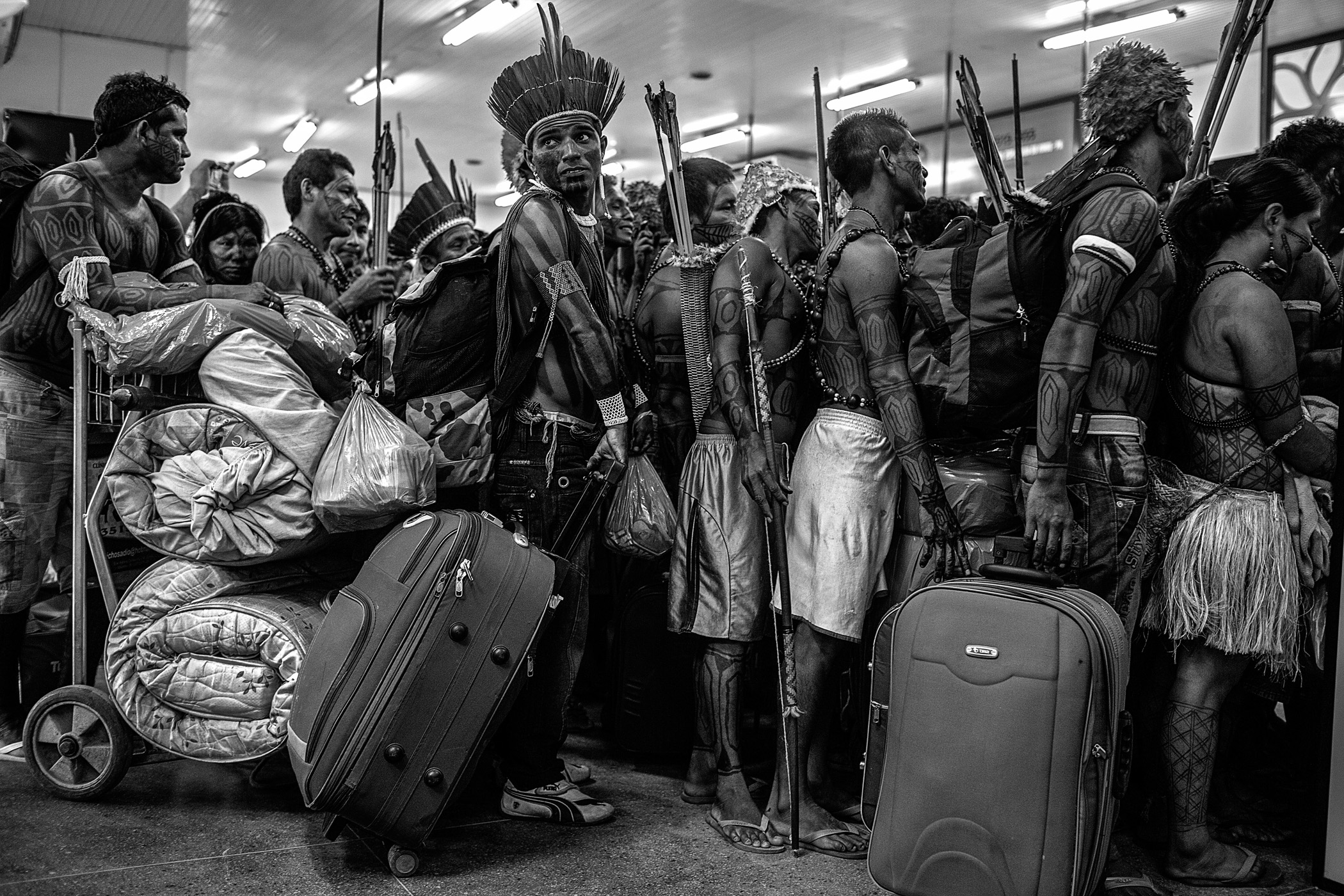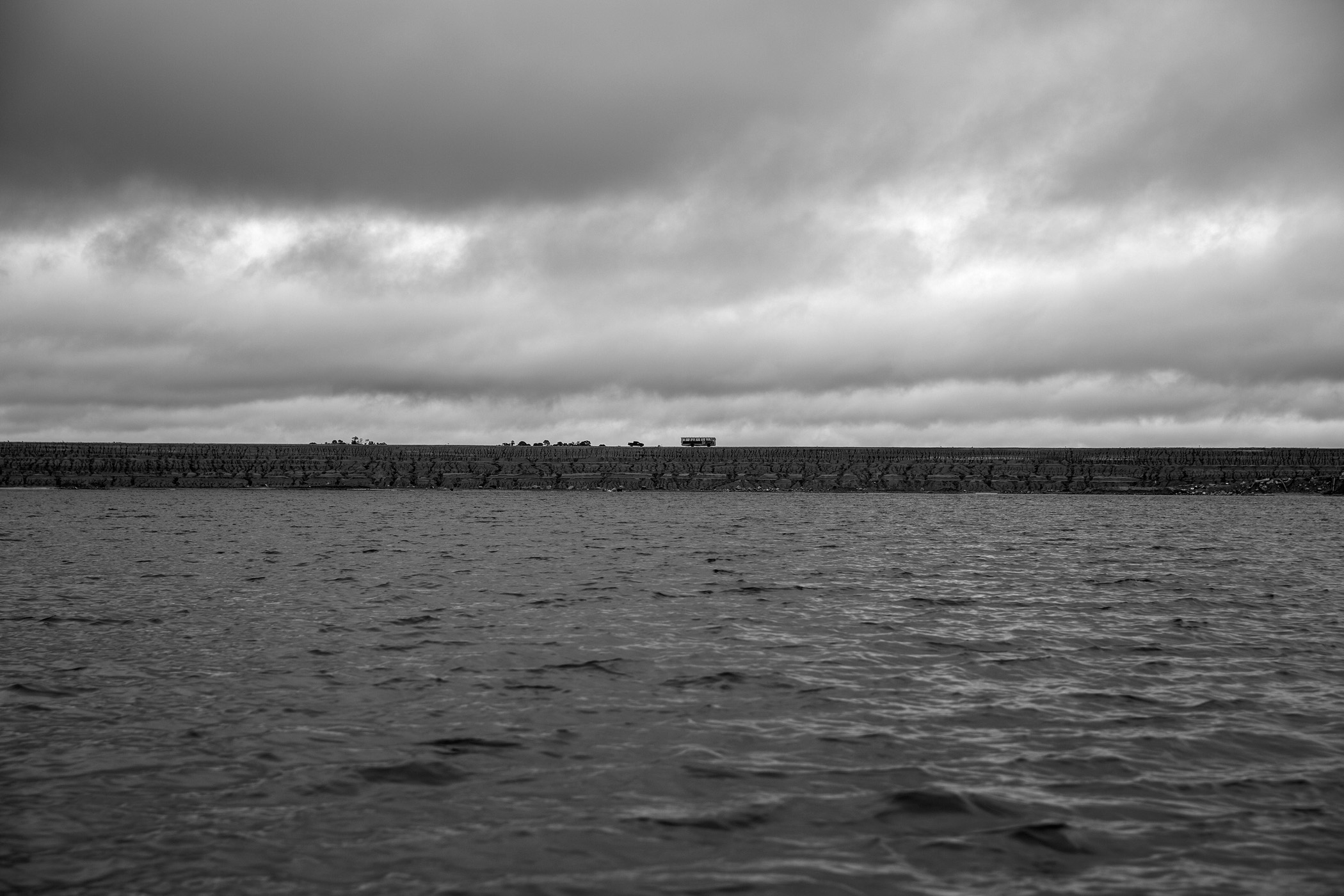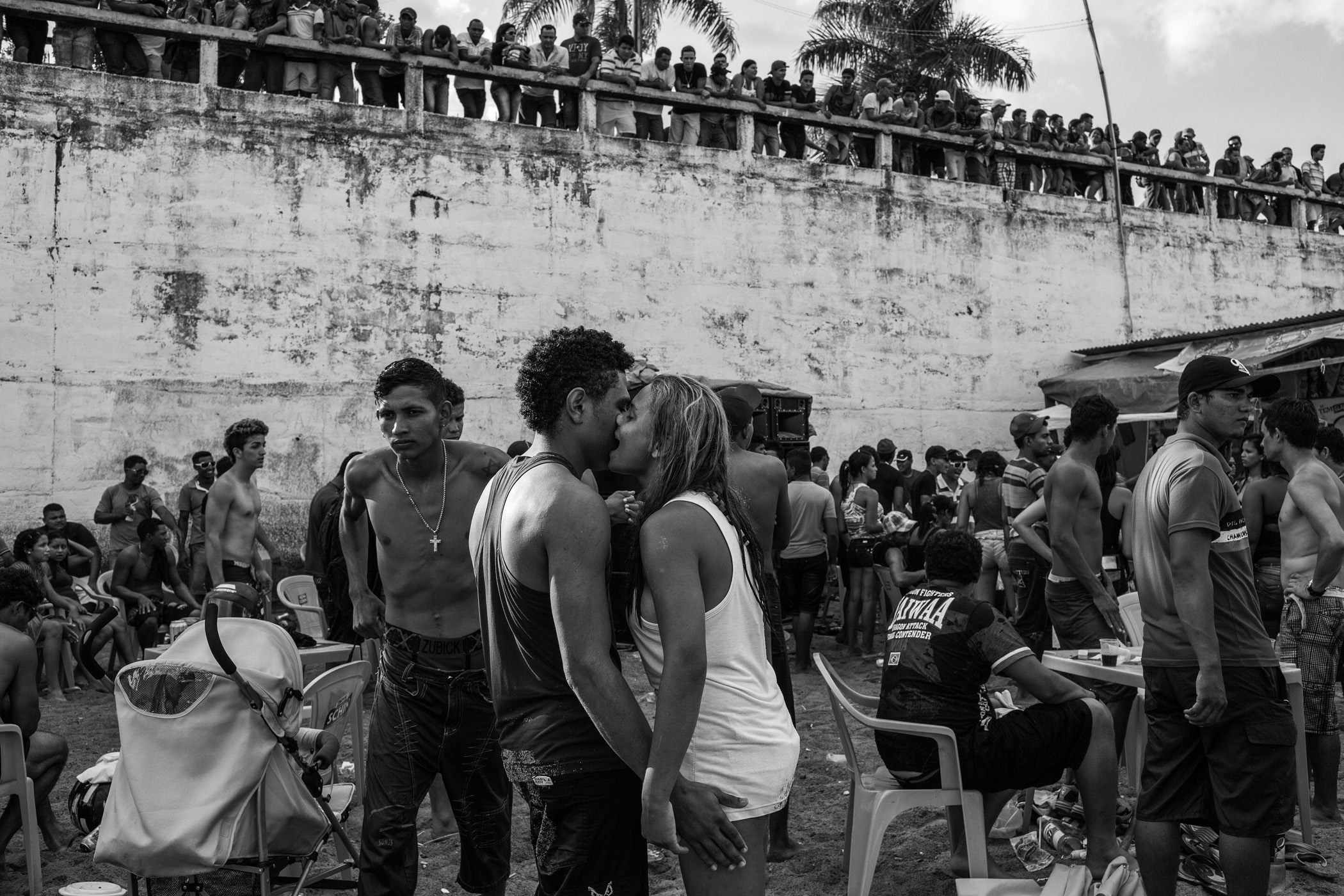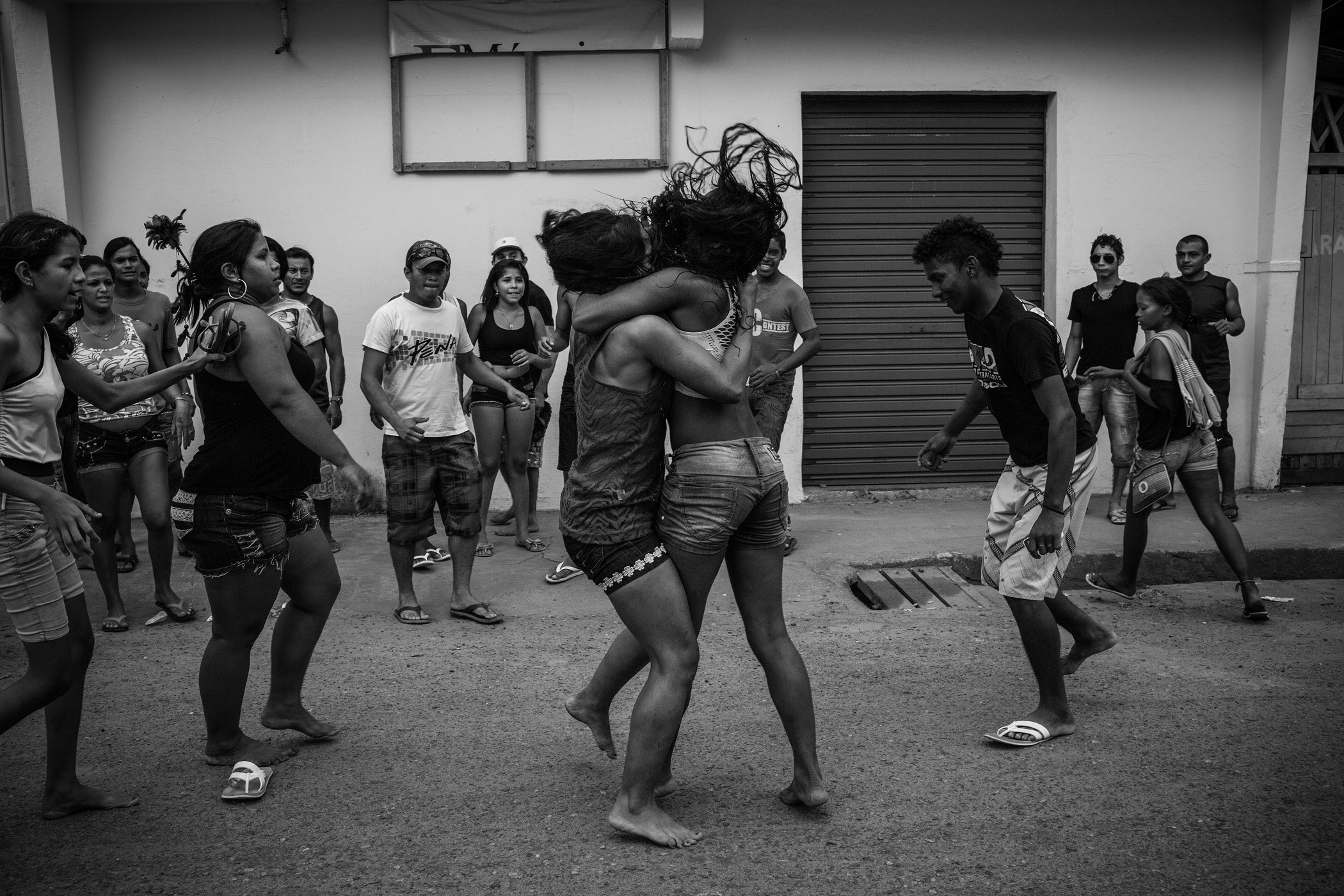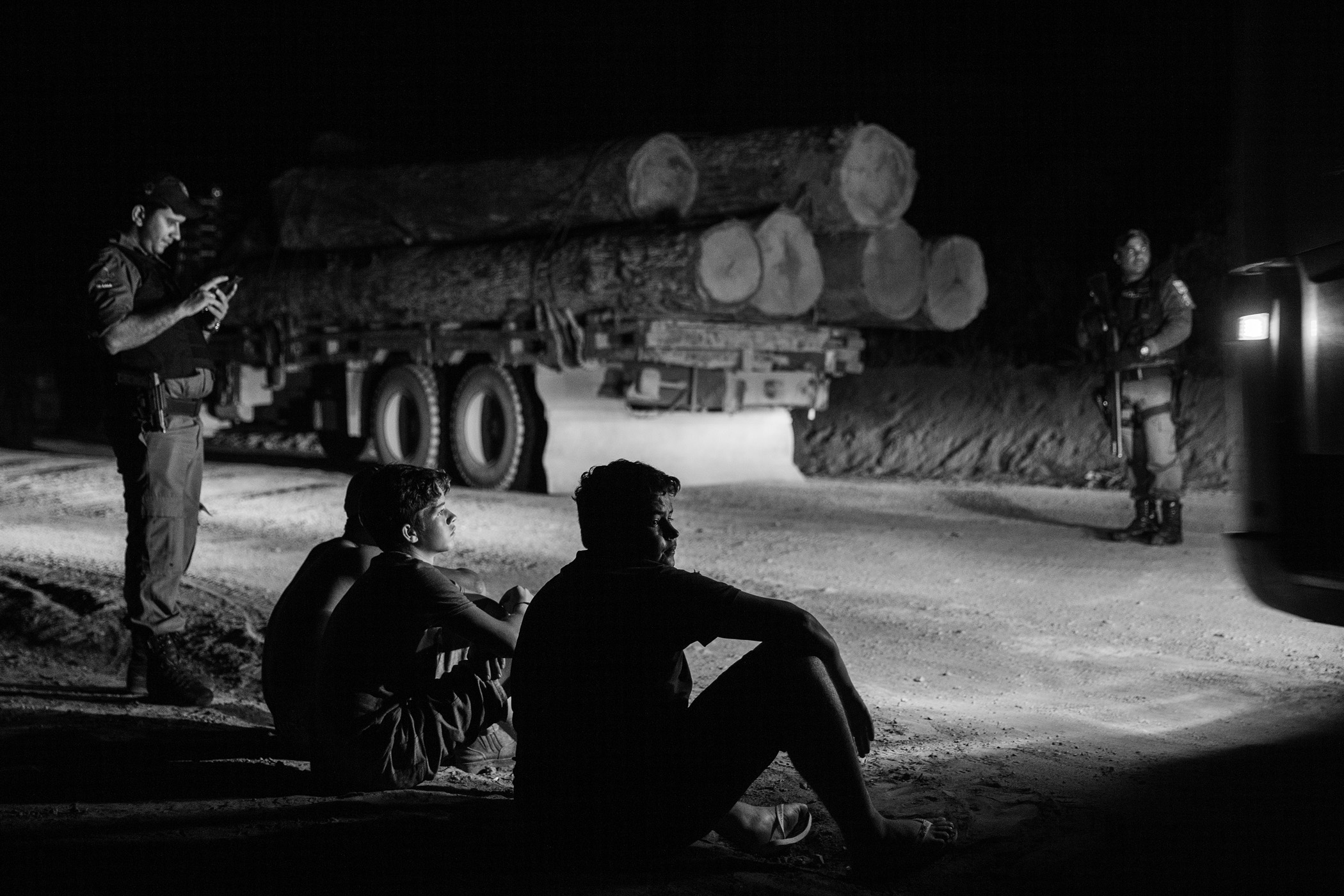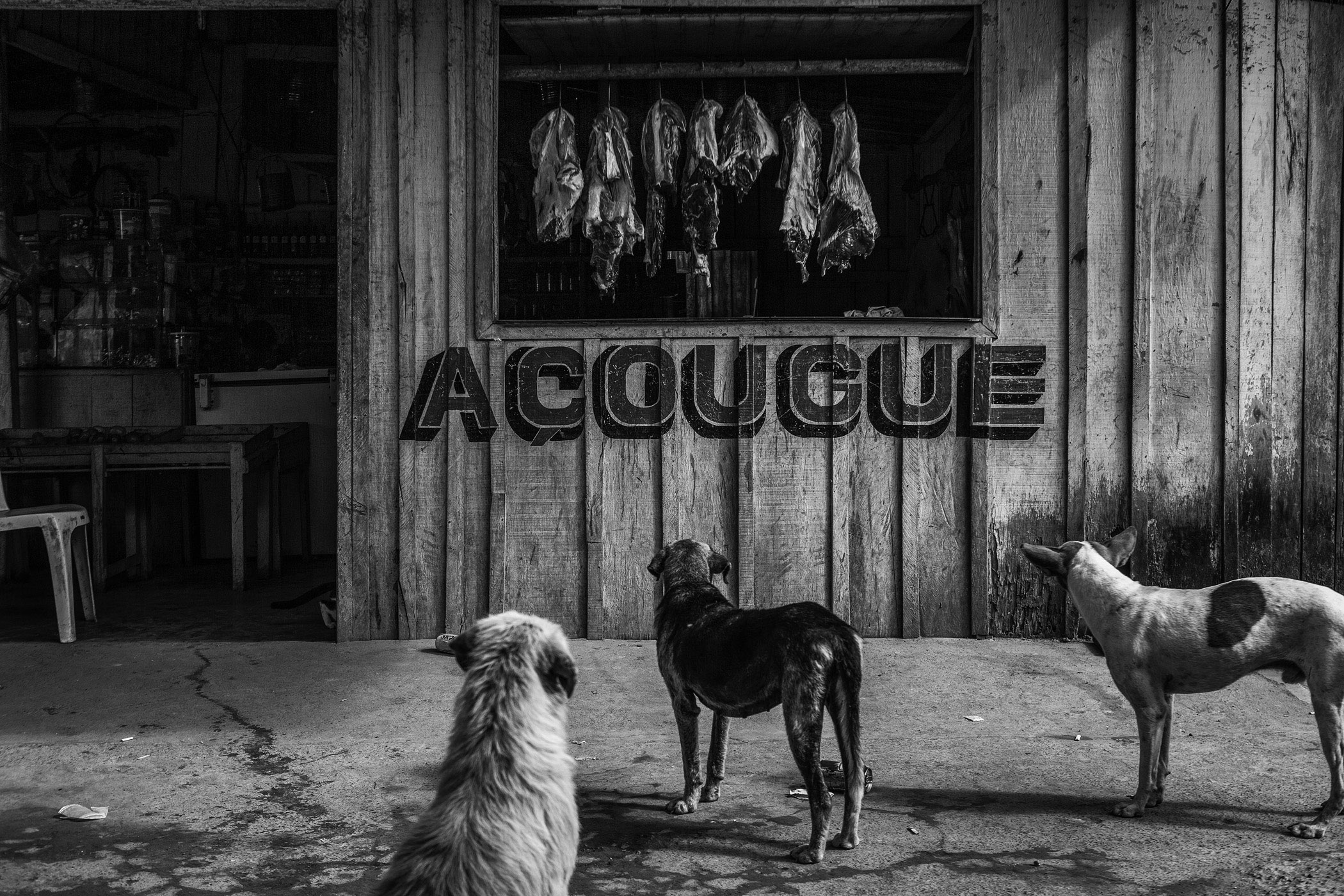The Amazon rainforest, an area of five and a half million square kilometres, is often referred to as the 'Lungs of the World', absorbing around 7.6 billion metric tonnes of carbon dioxide every year while producing a fifth of the world's oxygen.
A stretch of the BR-319 highway that connects Manaus to Porto Velho. Near Manicoré, Amazonas, Brazil.
It is also the most biodiverse region on the planet, home to over three million species of plants and animals. Three fifth of this priceless natural habitat lie within the borders of Brazil. But it is under severe threat. Since 1978 a million square kilometres of forest have been destroyed across the Amazon basin as deforestation has shifted from being a consequence of subsistence farming to the far more destructive impact of large scale agriculture and industrial activity. Cattle ranching now accounts for 70% of Amazon deforestation.
A statue of beef cattle indicates the entrance of a farm in Peixoto de Azevedo alongside the BR-163 highway.
Small patches of rain forest, surrounded by vast agricultural fields, are all that remain after vast swathes of forest have suffered deforestation. Para State is the most deforested of all Brazil's Amazon states. The state accounts for 43% of total deforestation in the region.
Piraha women and children, standing next to their camp on the banks of the Maici River, watch drivers passing by on the Trans-Amazonian highway hoping to be given snacks or soft drinks.
A Munduruku Indian navigates the waters of the Tapajos river.
Men work in a gold mine in Peixoto de Azevedo in northern Mato Grosso.
Dredges used for illegal gold extraction on the Madeira River.
Just as the threat of climate change is being discussed at the highest levels and politicians worldwide are laying out plans to decarbonise their countries and reduce harmful emissions, the exploitation of natural resources in the Amazon basin continues unabated.
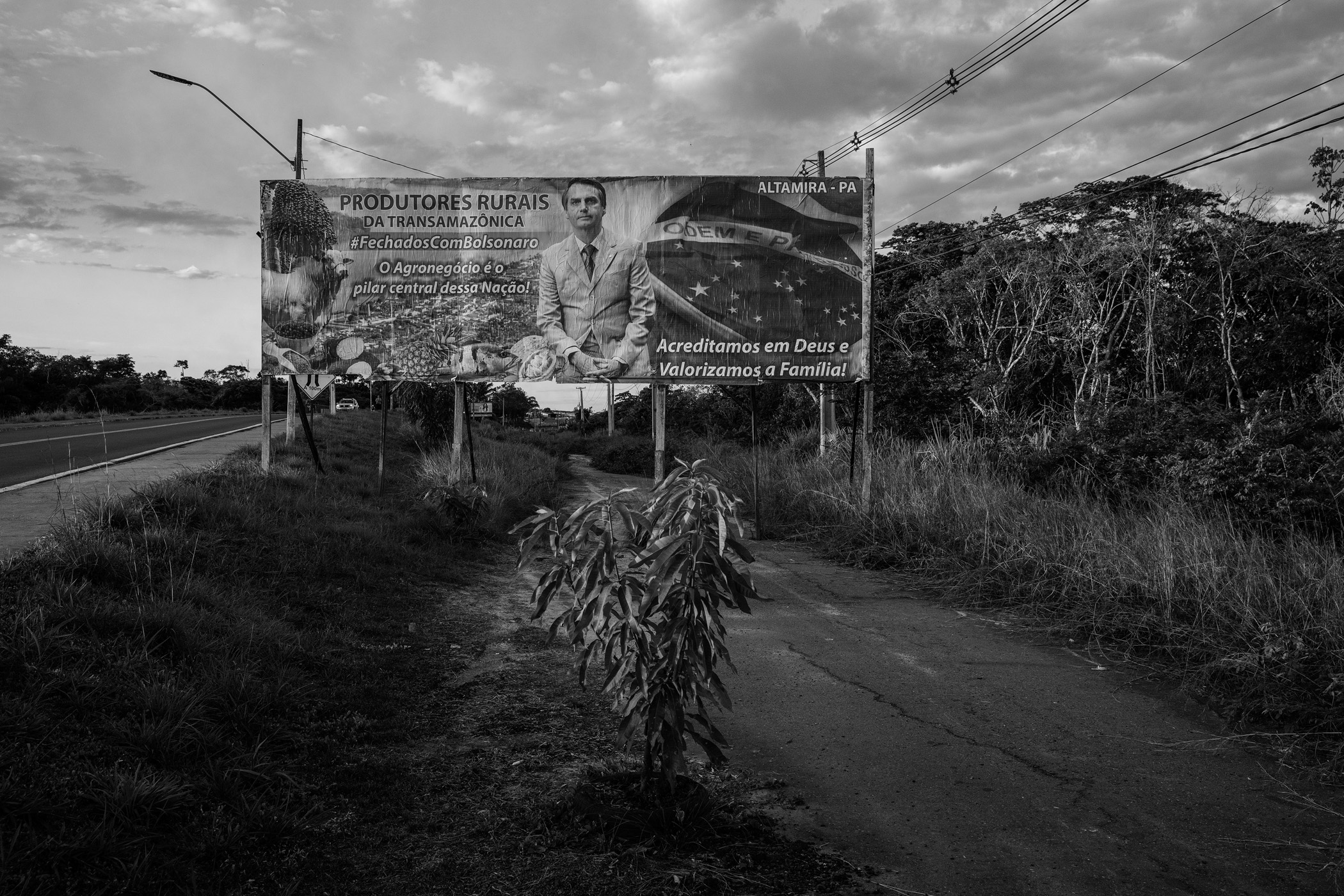
A billboard with a message of support to President Bolsonaro financed by local farmers from the city of Altamira, which is located on the banks of the Trans- Amazonian highway.
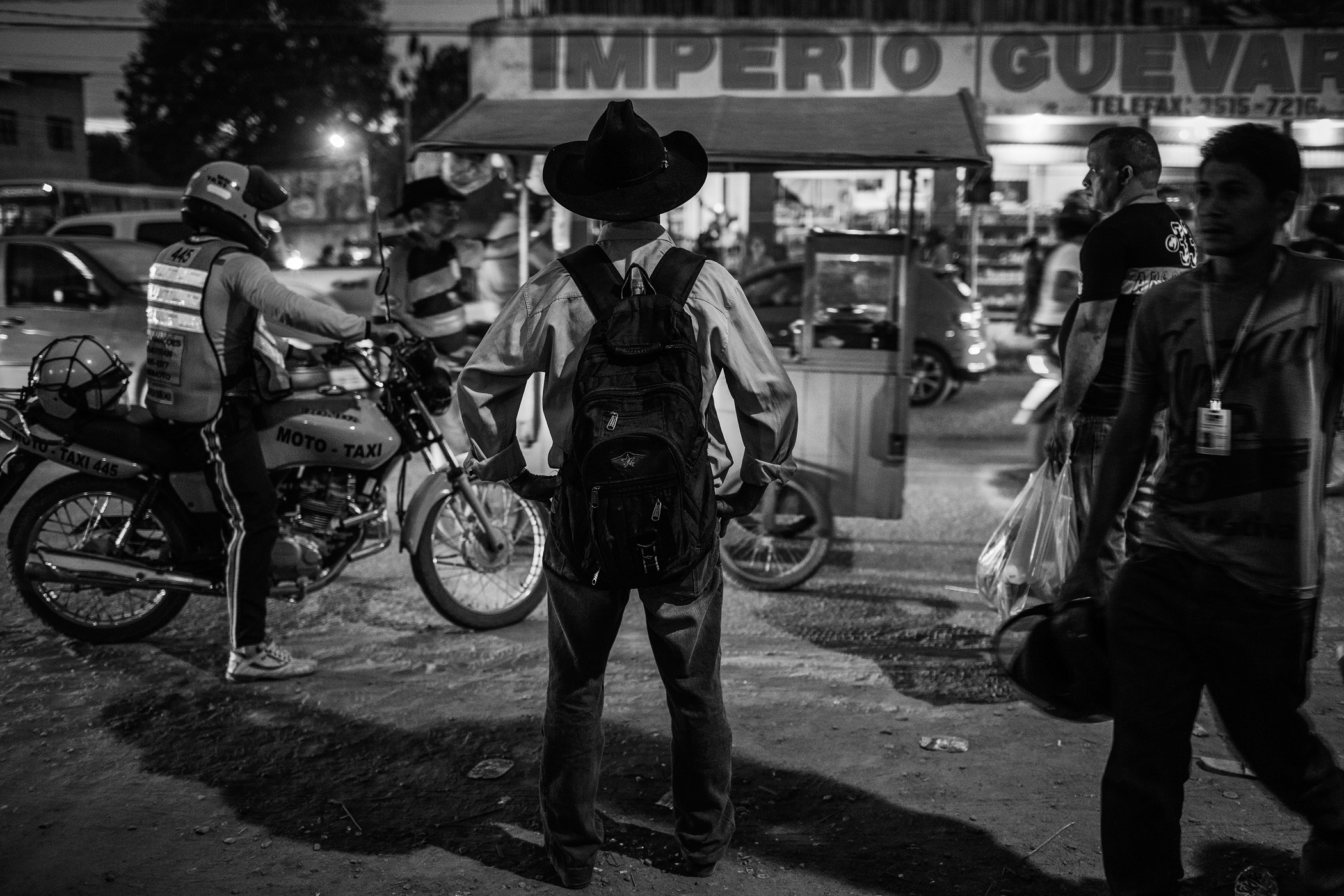
A newly arrived Belo Monte dam construction worker observes a busy street in Altamira.
A drunk resident of the Quilombola (Afro-Brazilian) community of Pedras Negras passed out on a bench.
Alongside industrial agriculture, logging, mining and hydroelectric power generation are all contributing to environmental degradation and deforestation, a process accelerated by the administration, of President Jair Bolsonaro, a right-wing former army captain, who has little time for environmentalists and has expressed doubts about the incontrovertible evidence of global warming. His foreign minister, Ernesto Araujo, has dubbed climate change a 'plot' by 'cultural marxists' to stifle western economies and empower China.
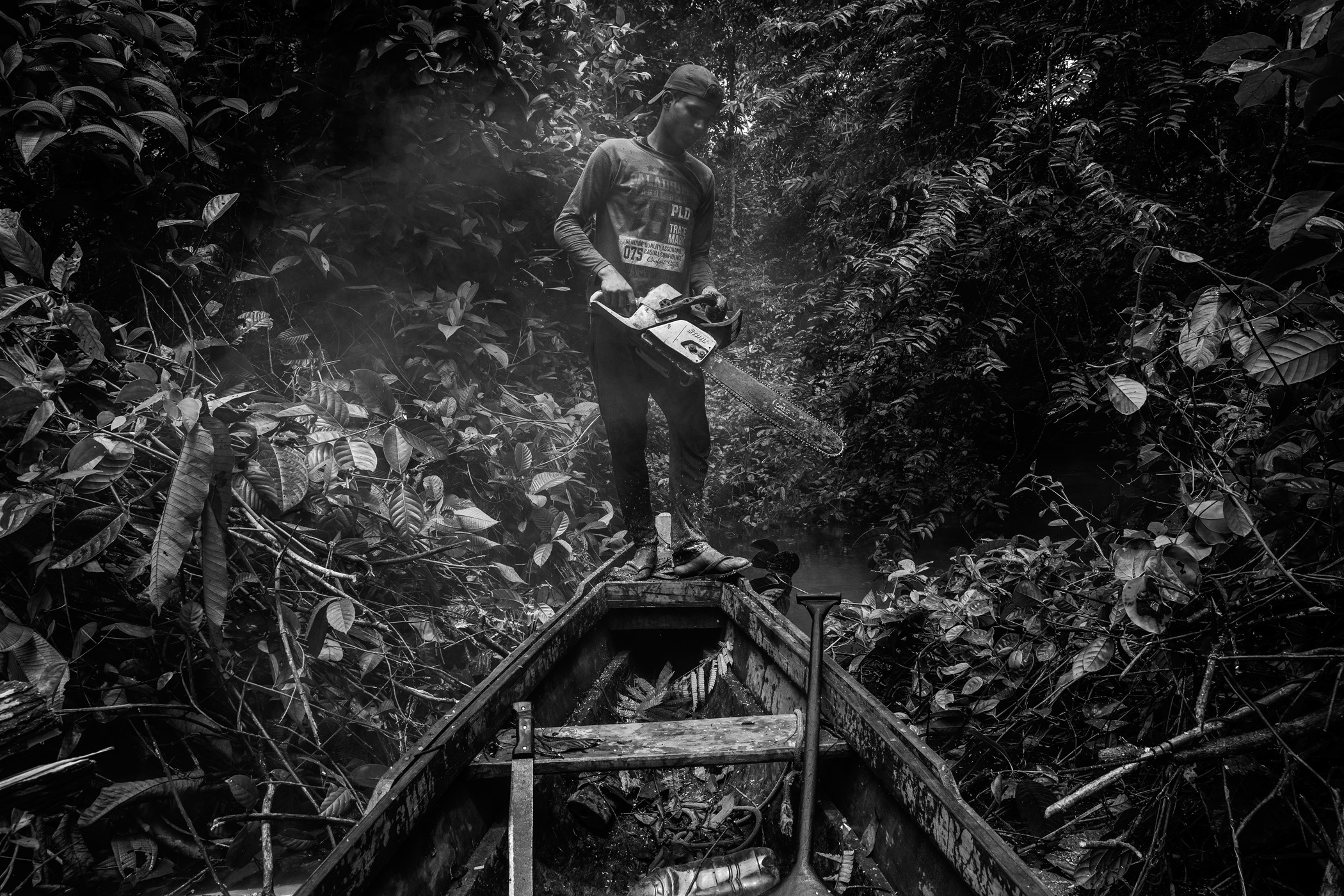
Jasson Oliveira do Nascimento, resident of the Arapixi Extractive Reserve, cuts the vegetation to make way for his canoe.
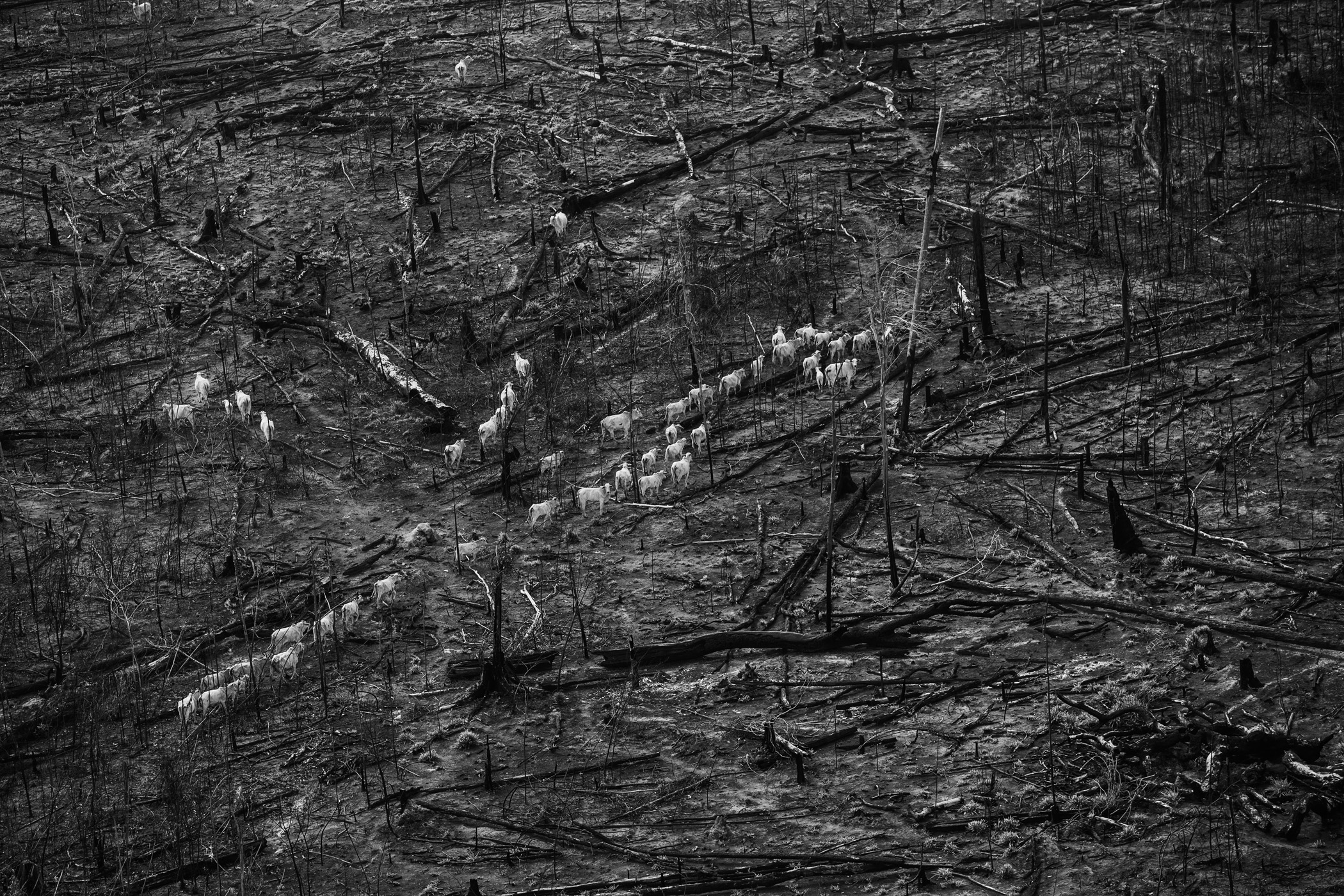
Cattle cross a freshly burned area of forest within the Altamira National Forest in the BR-163 highway region.
Bolsonaro has called for farming and mining to be increased in protected areas in the Amazon, arguing that this could help lift deprived regions out of poverty. Yet while nine out of 10 municipalities with the lowest humans development indexes in Brazil are in the Amazon region little, if any, of the money generated by mining and logging ends up being reinvested in the locally. In addition to official mining ventures the vast expanse of the Amazon is littered with illegal mines and camps of squatters cutting down valuable hard woods.
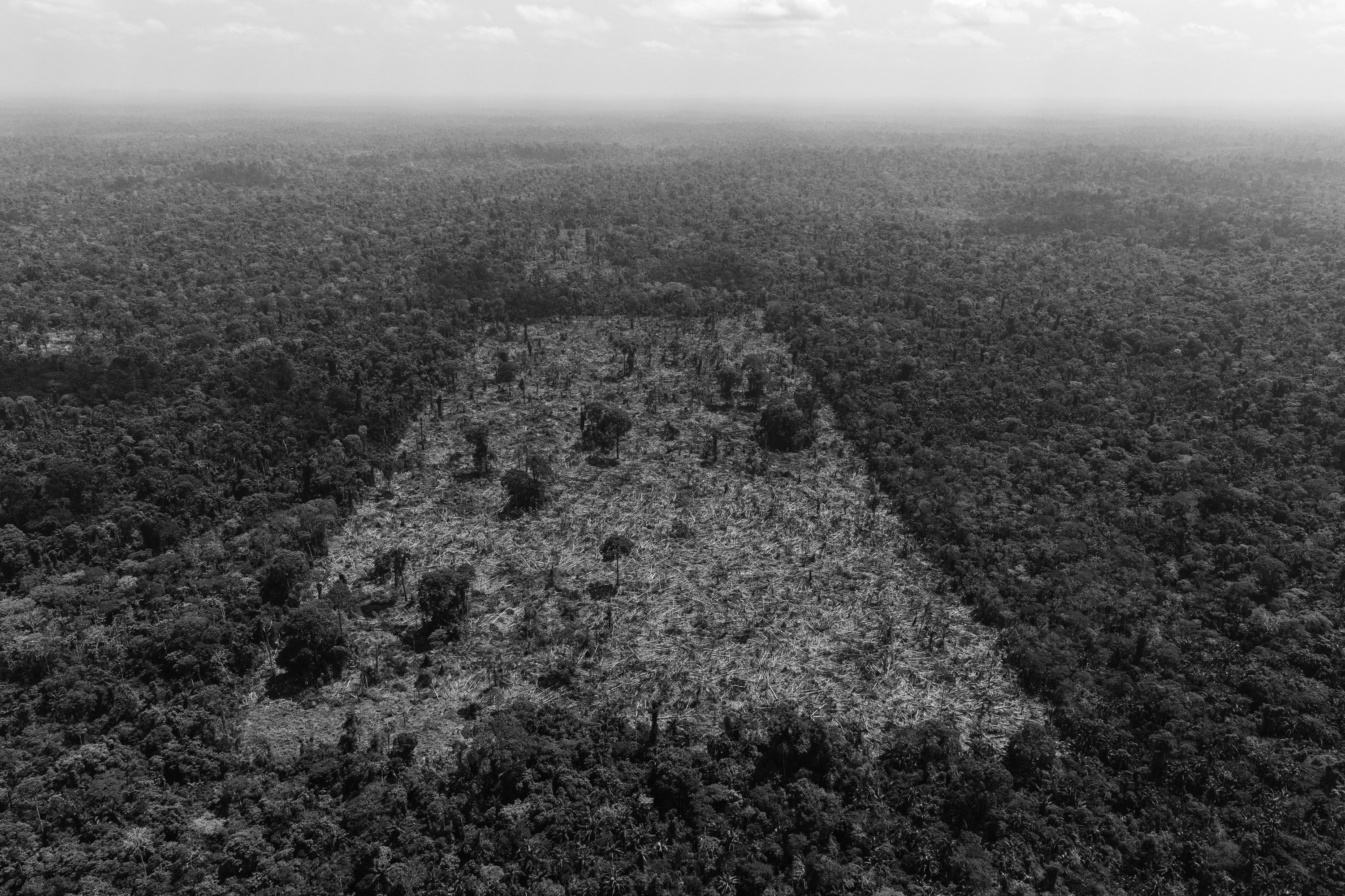
An area deforested by land grabbers in the Trincheira Bacaja Indigenous Land.
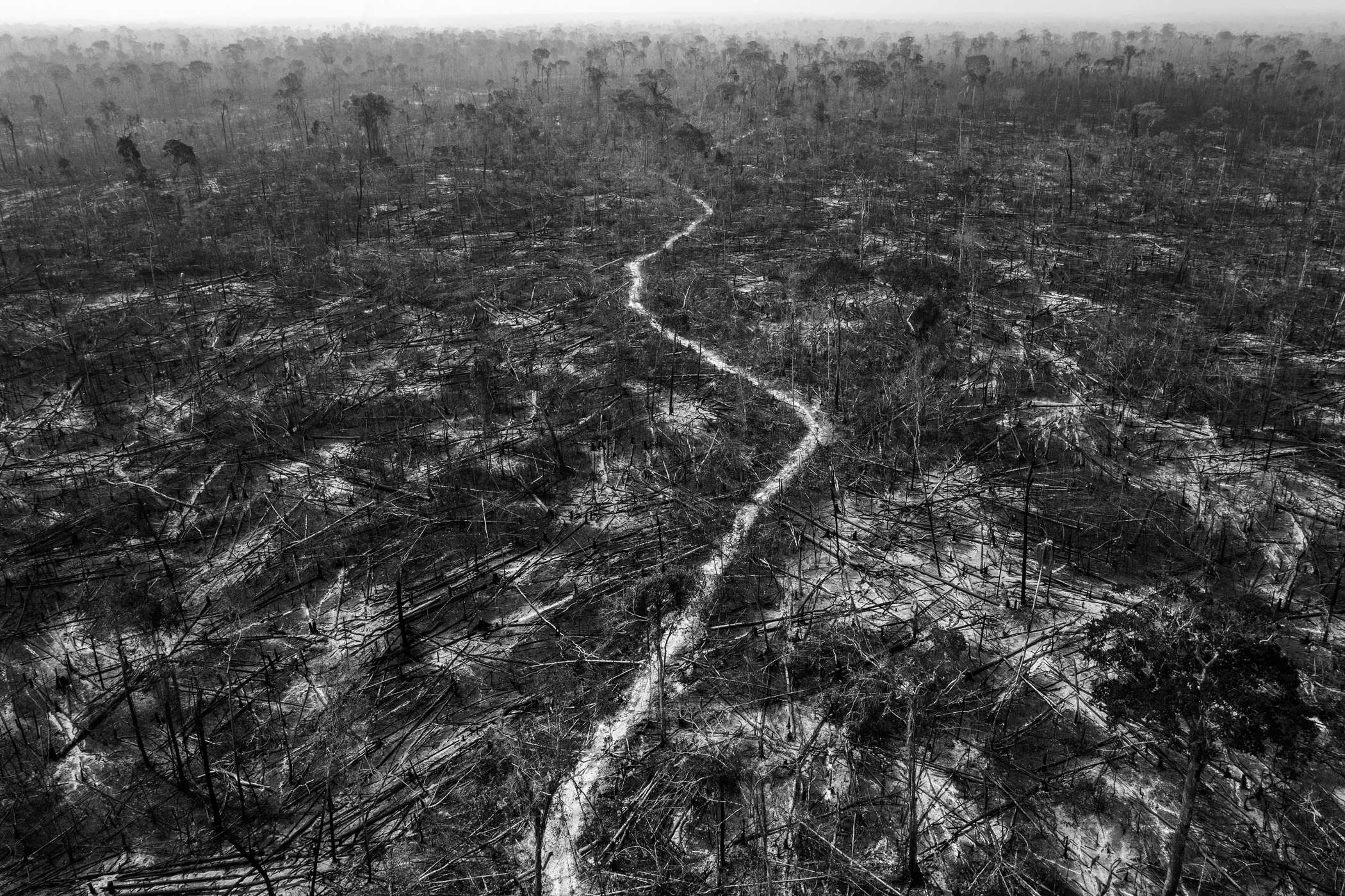
Recent deforestation in the municipality of Apui, along the Trans-Amazonian highway in the south of Amazonas State.
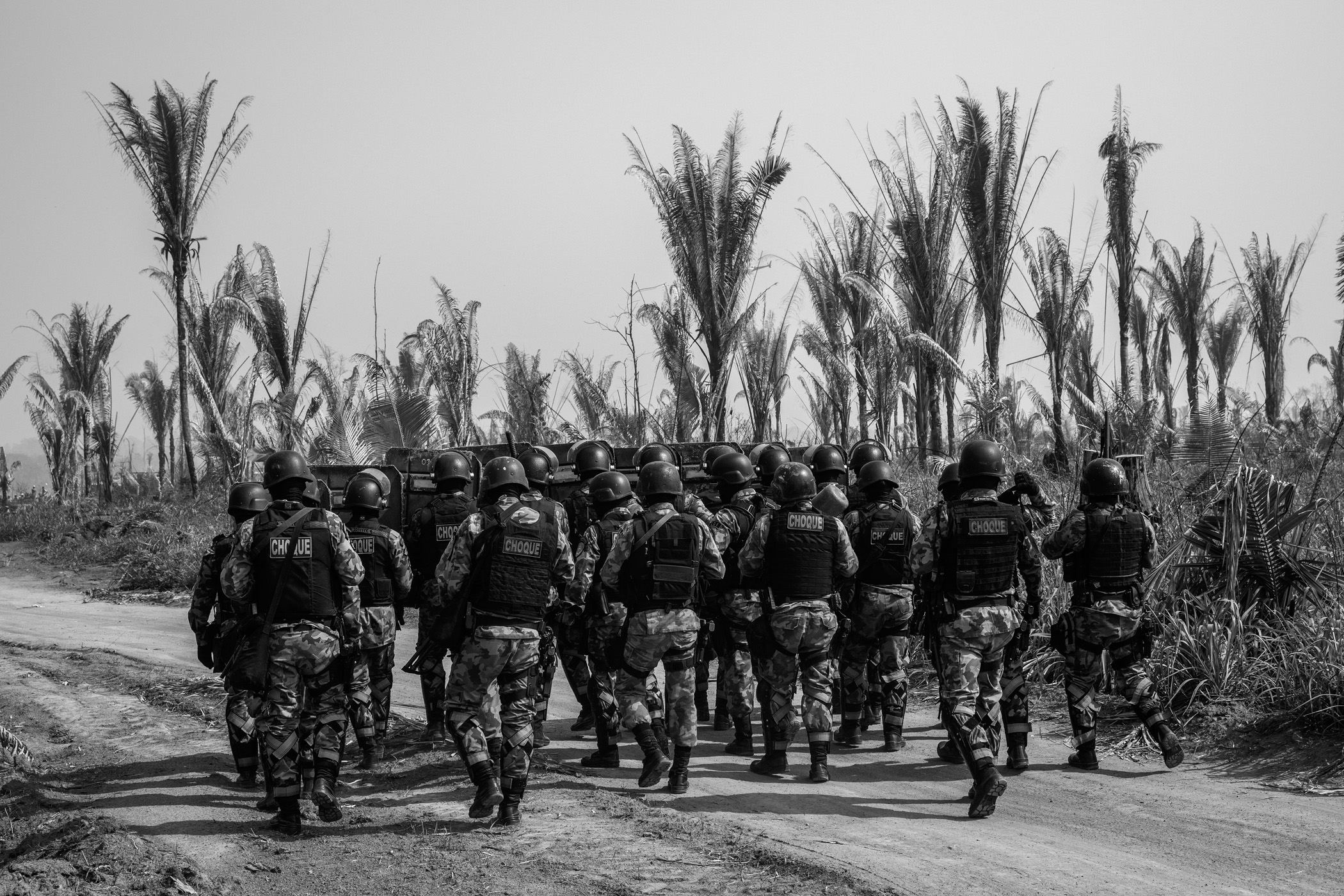
Riot police walk down a dirt road inside the Bom Futuro National Forest to remove invaders who had set up a camp with about 200 shacks inside the reserve.
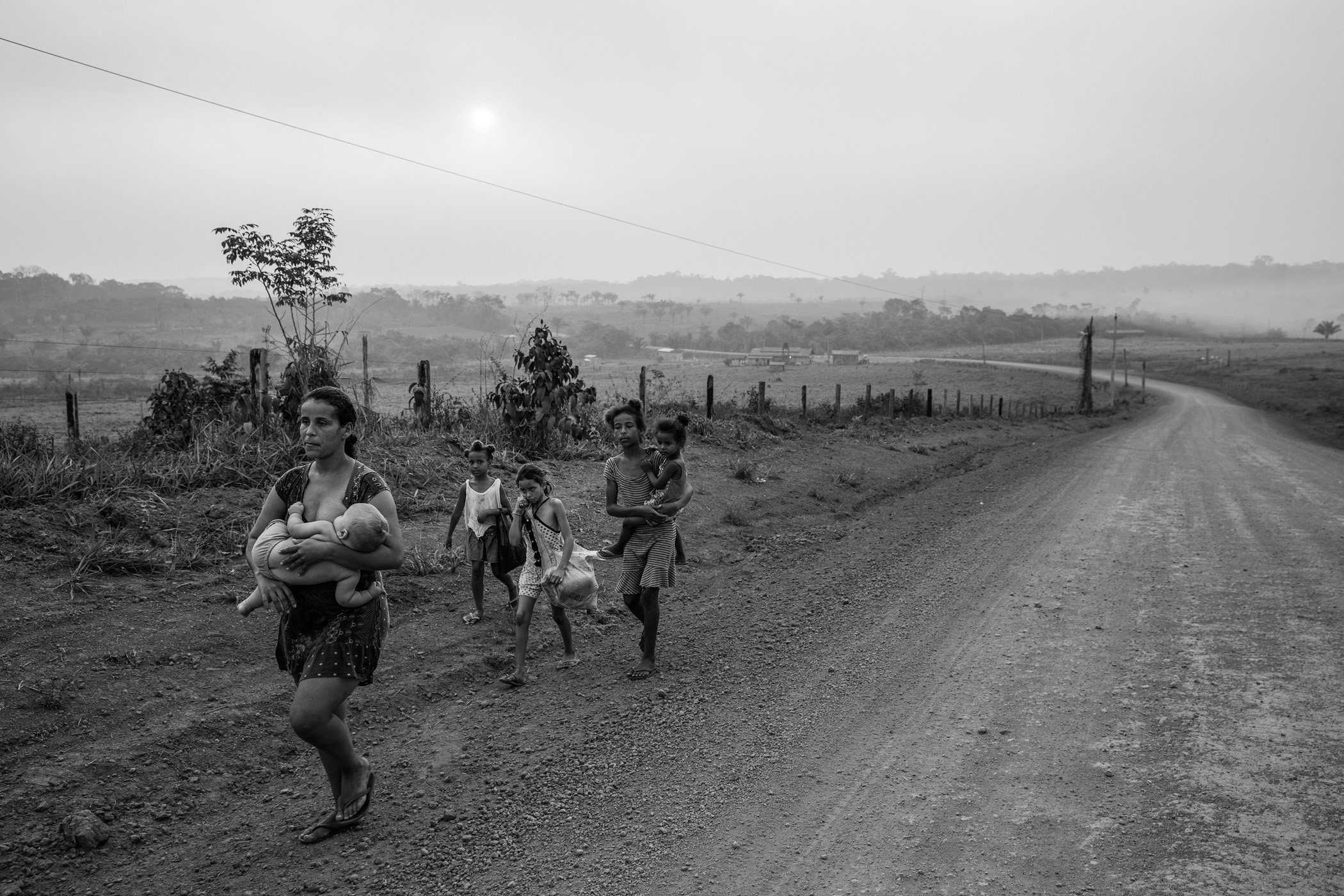
A newly arrived migrant family from Rondonia State walk along the Trans-Amazonian Highway in rural Apui.
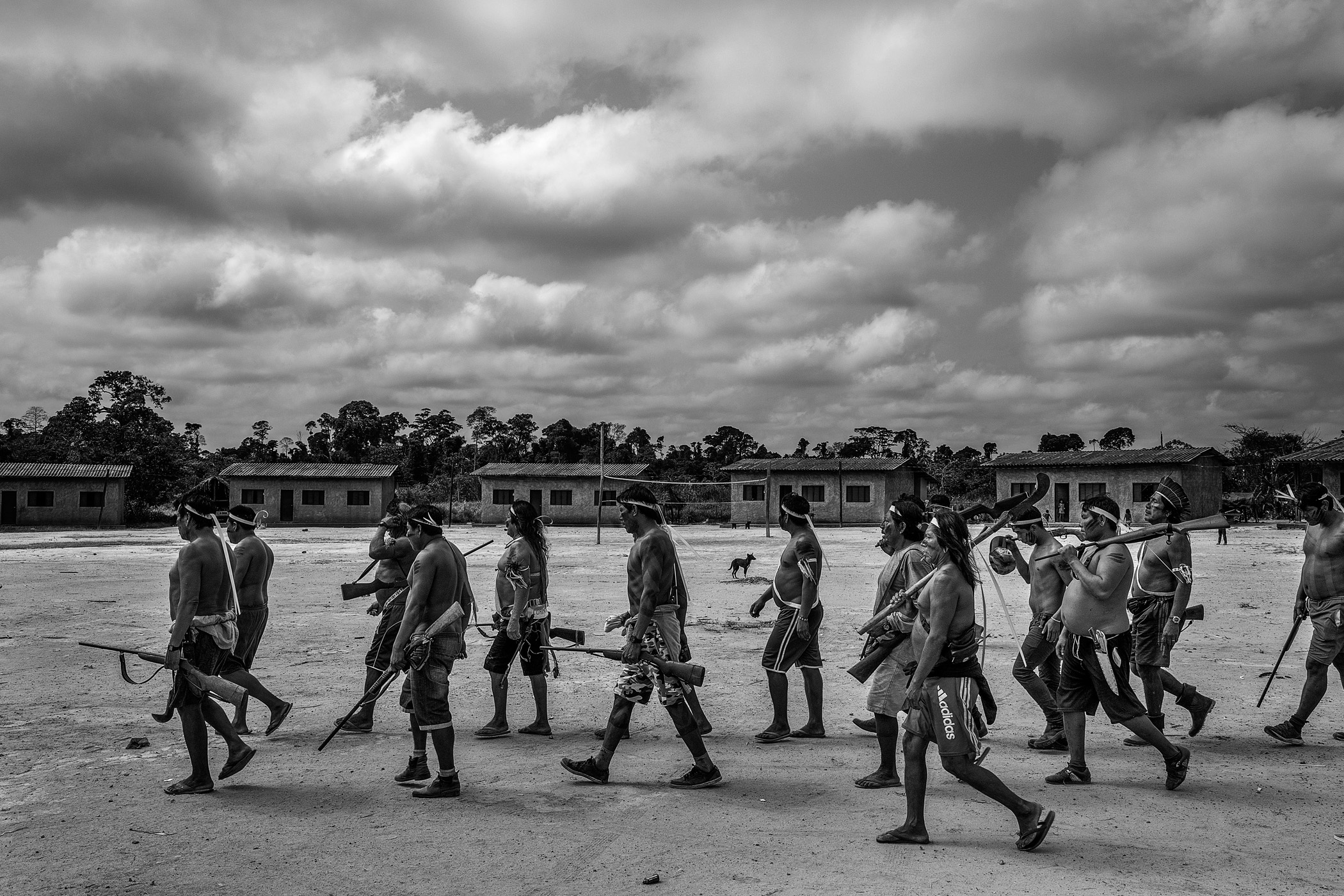
Xikrin warriors arrive at Rapko village after a jungle expedition to remove invaders from the Trincheira Bacaja Indigenous Land.
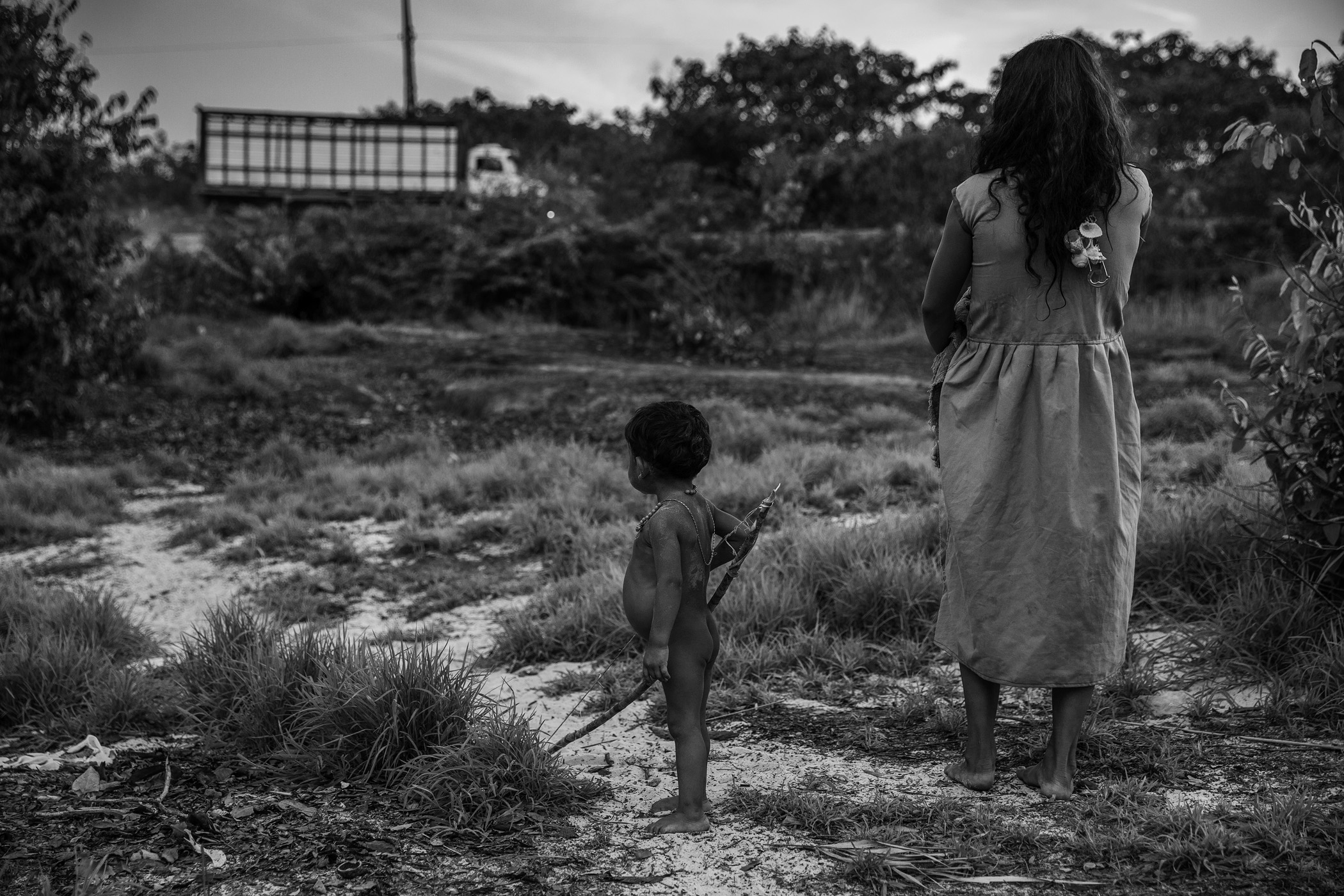
An indigenous Piraha woman and child watch a cattle truck passing on the Trans-Amazonian Highway.
In the Amazon, indigenous communities and local residents have found themselves caught between the competing interests of extractive industries and large scale government infrastructure projects.
Indigenous Indians prepare to attend a funeral ceremony at Yawalapiti Village amidst the smoke that has covered the Xingu Indigenous Park due to the large number of forest fires.
Indigenous Indian men participate in the 'Quarup', a funeral ceremony, in Yawalapiti village amid smoke from forest fires.
For the construction of the Belo Monte Dam, a vast hydroelectric project on the Xingu river completed in 2019, workers flocked to the town of Altamira from all over Brazil. Between 2011 and 2014 the population doubled from 75,000 to 150,000 and the rate of violent crime rose sharply. In 2017, Altamira was reputed to be 'the most violent city in Brazil'.
Munduruku Indians line up to board a plane at Altamira Airport after protesting against the construction of the Belo Monte Dam on the Xingu River.
A bus runs along the main dam of the Belo Monte hydroelectric dam on the Xingu River.
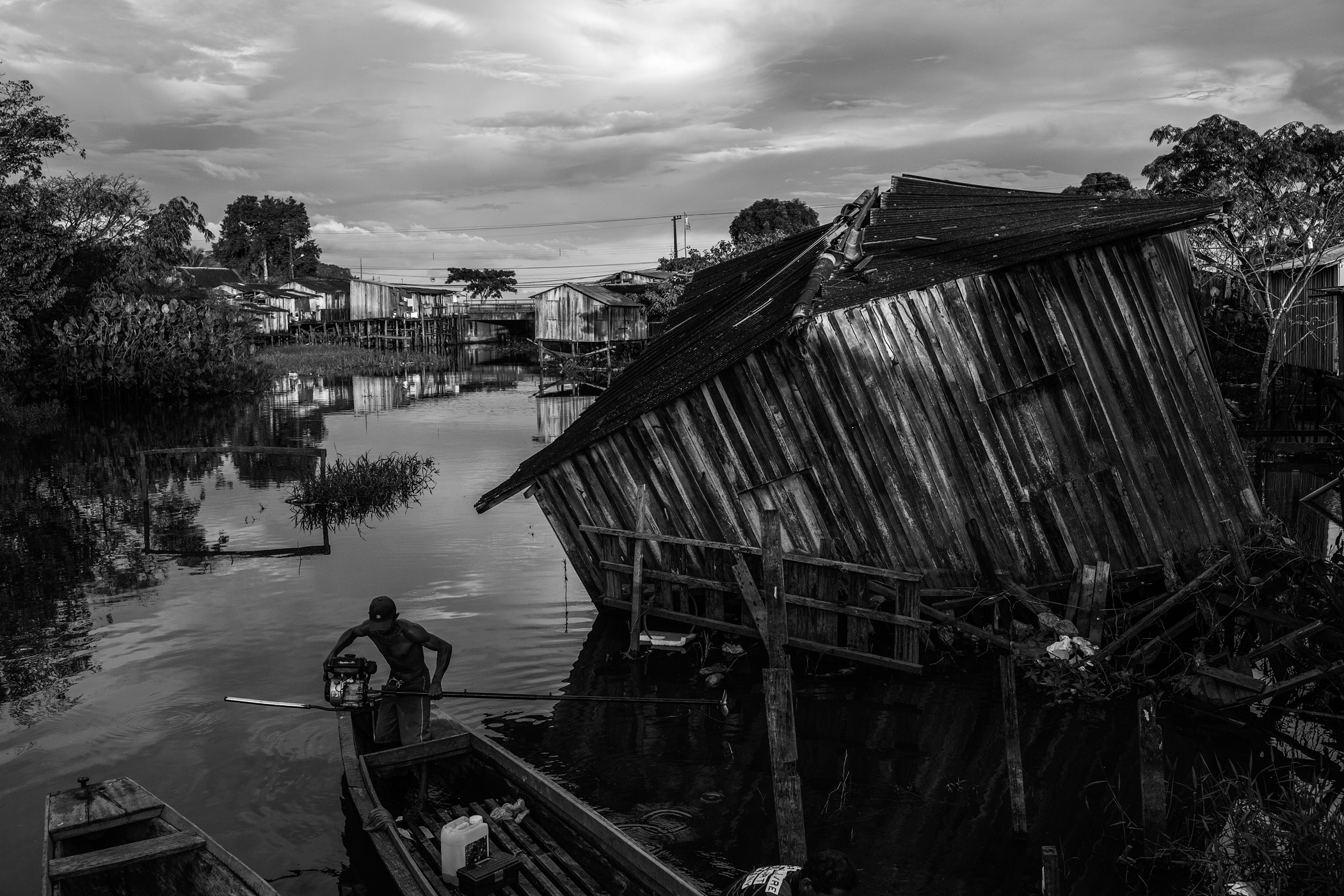
A fisherman unloads his boat in a stream next to a collapsed house. All the residents of this region known as 'Baixao' (lower part of the city) have been removed from their homes because of the rising water level of the Xingu River caused by the Belo Monte reservoir.
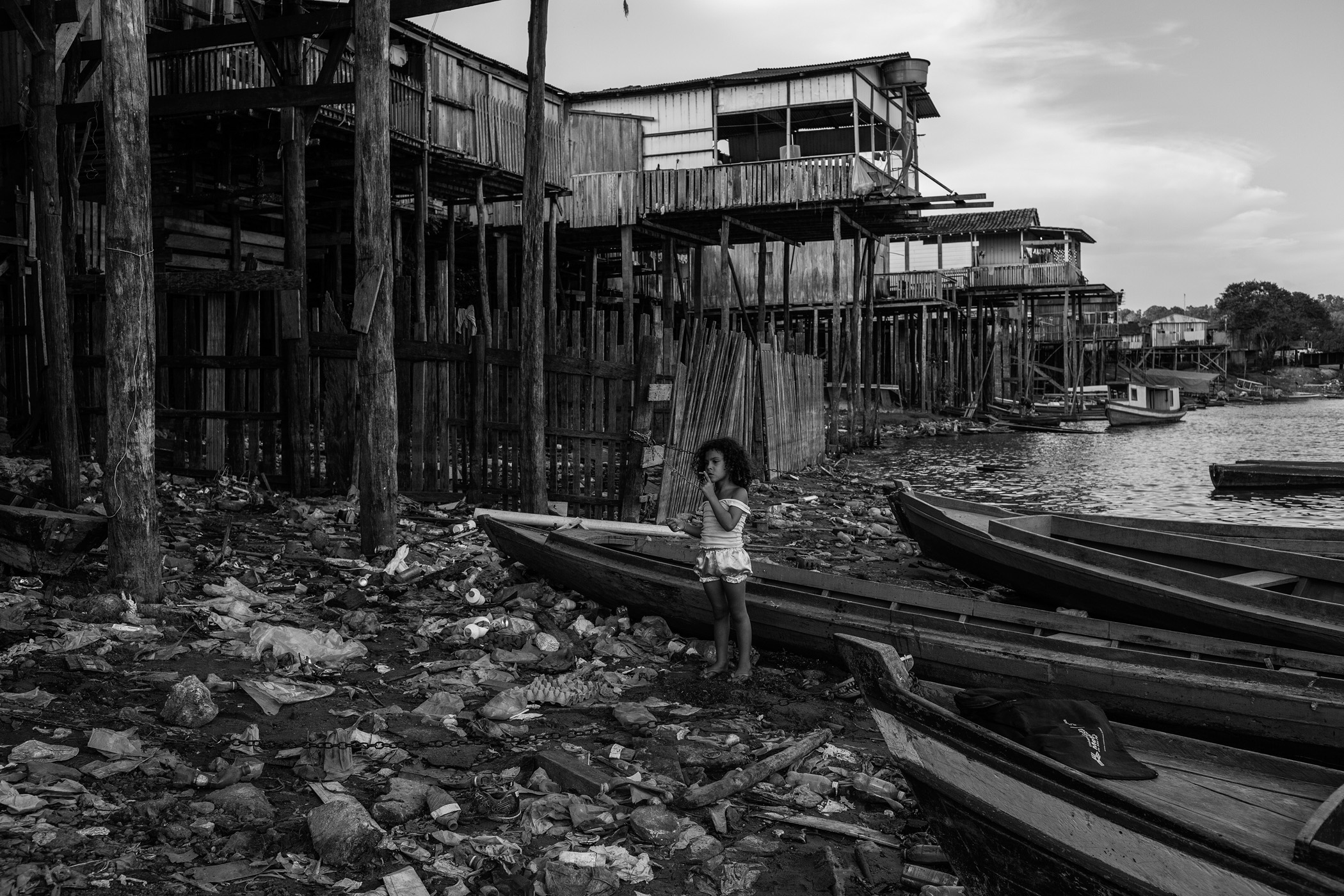
A girl waits to get into a canoe on the rubbish strewn banks of the Xingu River which is lined by stilt-houses and a wooden pier.
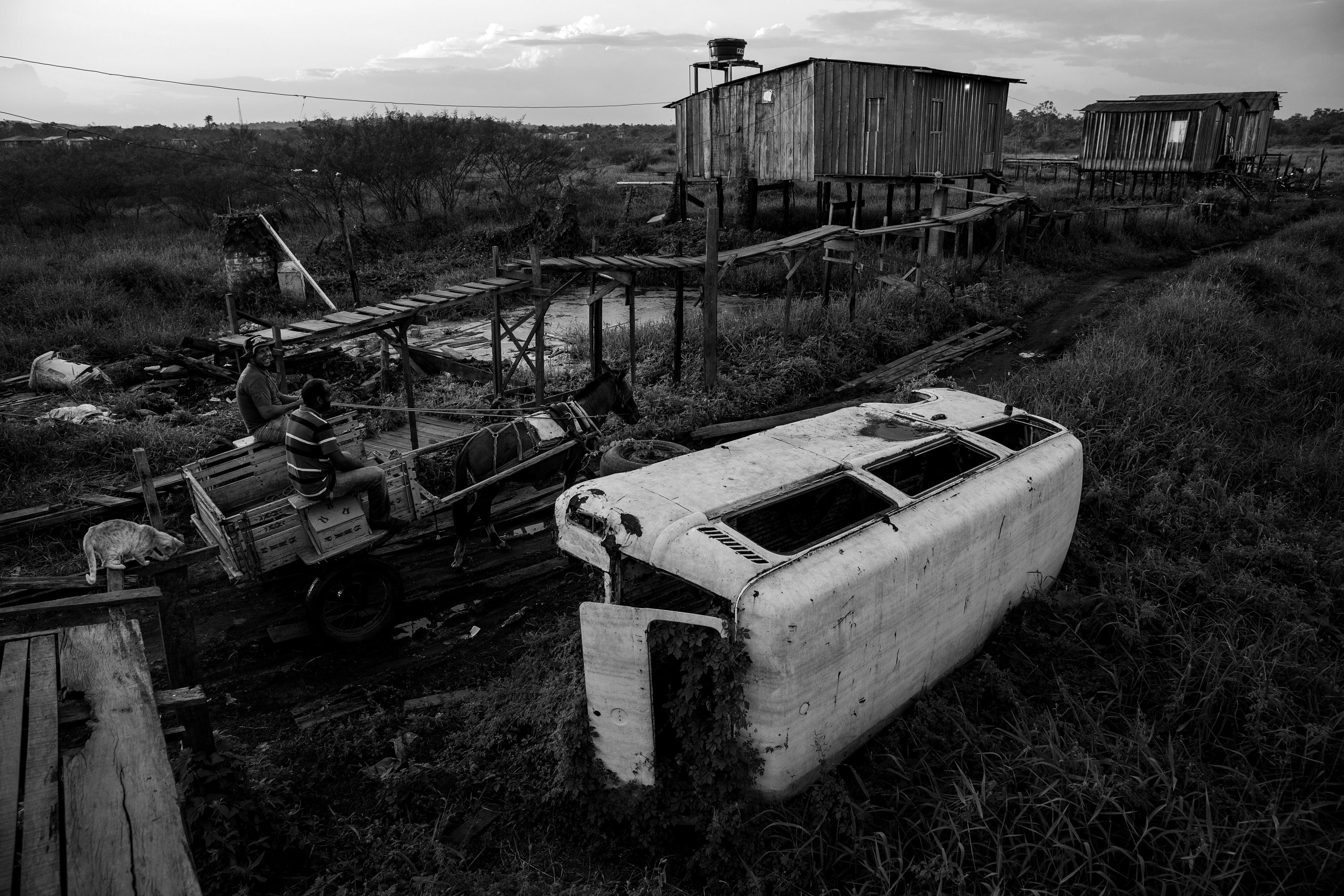
A horse drawn cart passes stilt houses built along the Altamira igarape (creek), the low-lying part of the city that now is under water indefinitely after the formation of the Belo Monte reservoir.
A party for the workers of Belo Monte dam on the river bank in Altamira. On the last weekend of the month, when the workers receive their salary, Altamira became a chaotic mess. With thousands of drunk men seeking to court the few available women, it took very little to start a knife fight. At the peak of the construction for the plant at the end of 2014/beginning of 2015, the sites housed more than 25,000 construction workers, 87% of them were men.
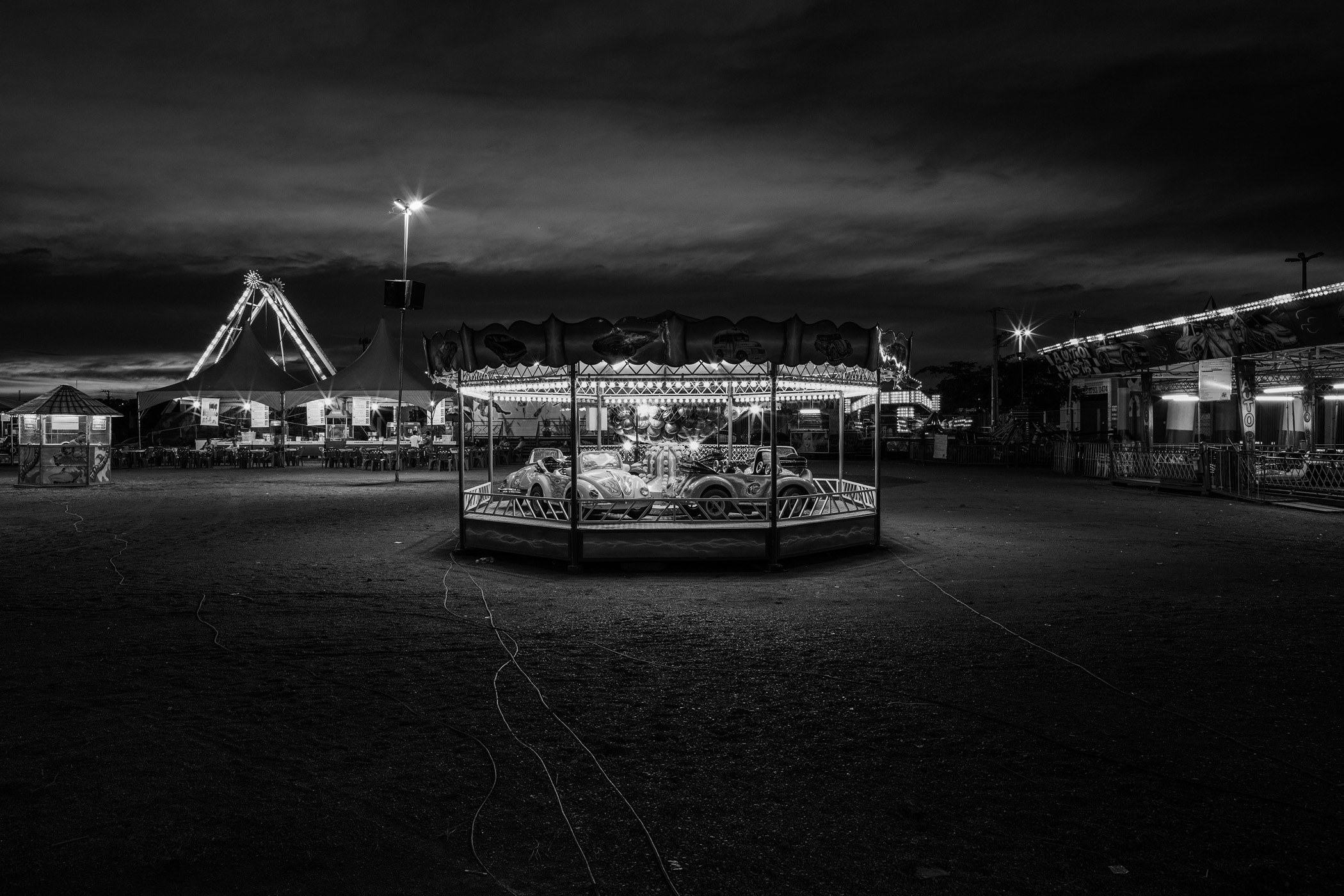
An amusement park set up in the centre of Altamira.
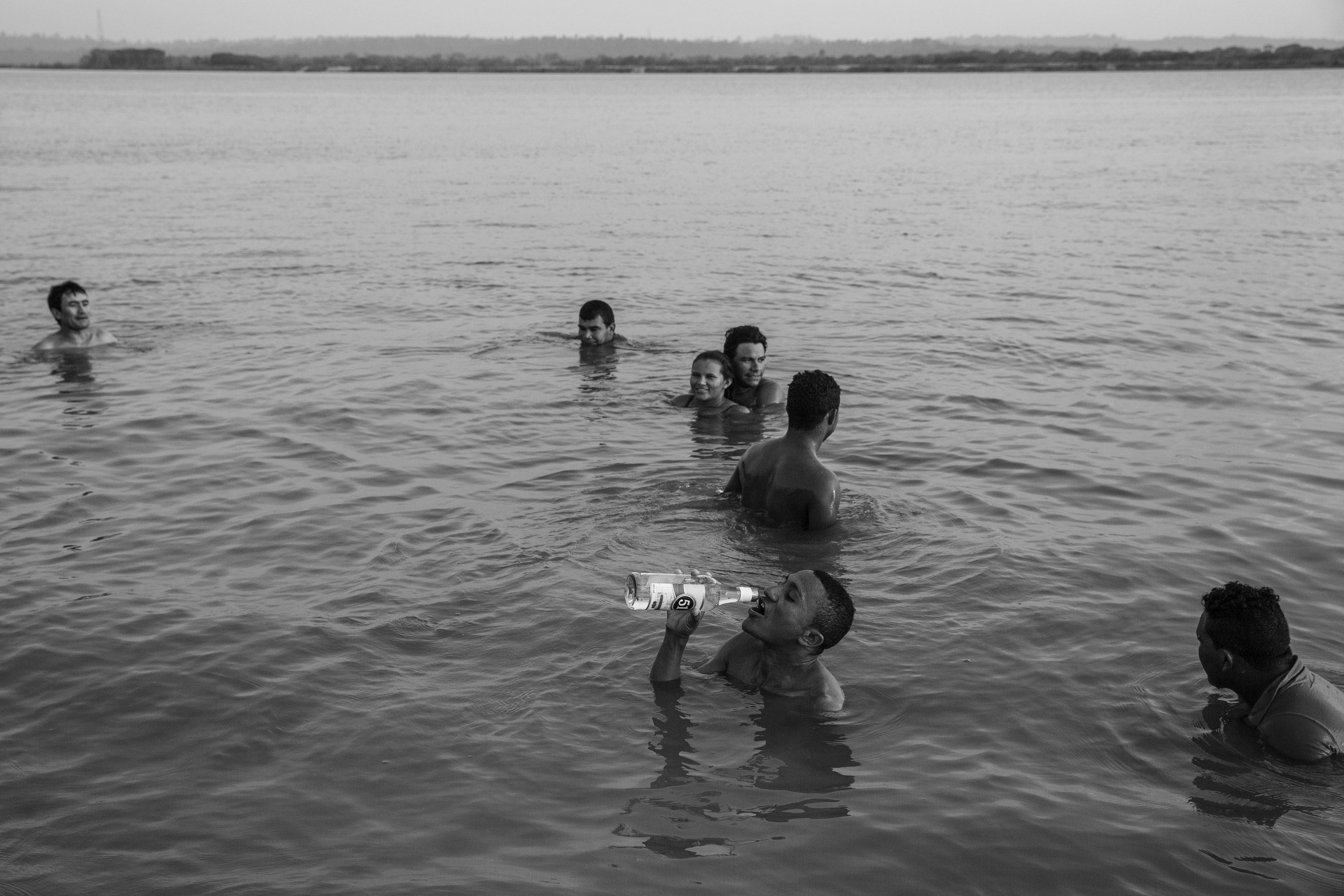
Workers from the Belo Monte dam, bathe in the waters of the Xingu River on a Sunday afternoon. At the peak of the construction of the plant at the end of 2014/beginning of 2015, the sites housed more than 25,000 construction workers, 87 % of them were men.
A fight between two women after a party held on the Belo Monte dam construction workers day off. At the peak of the construction for the plant at the end of 2014/beginning of 2015, the sites housed more than 25,000 construction workers, 87% of them were men.
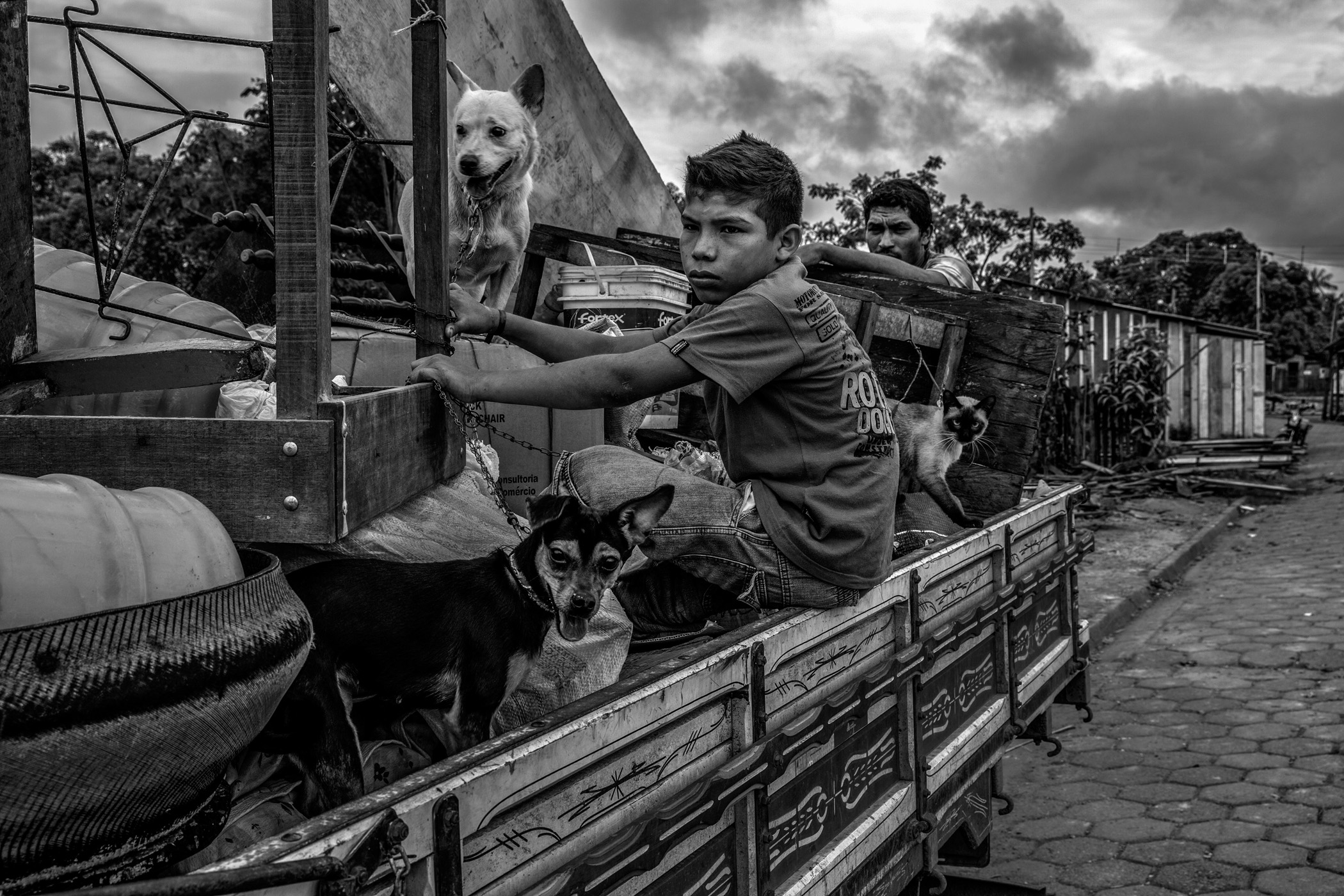
A boy sits on a truck loaded with the belongings and pets of a displaced family that used to live in a stilt house in Altamira
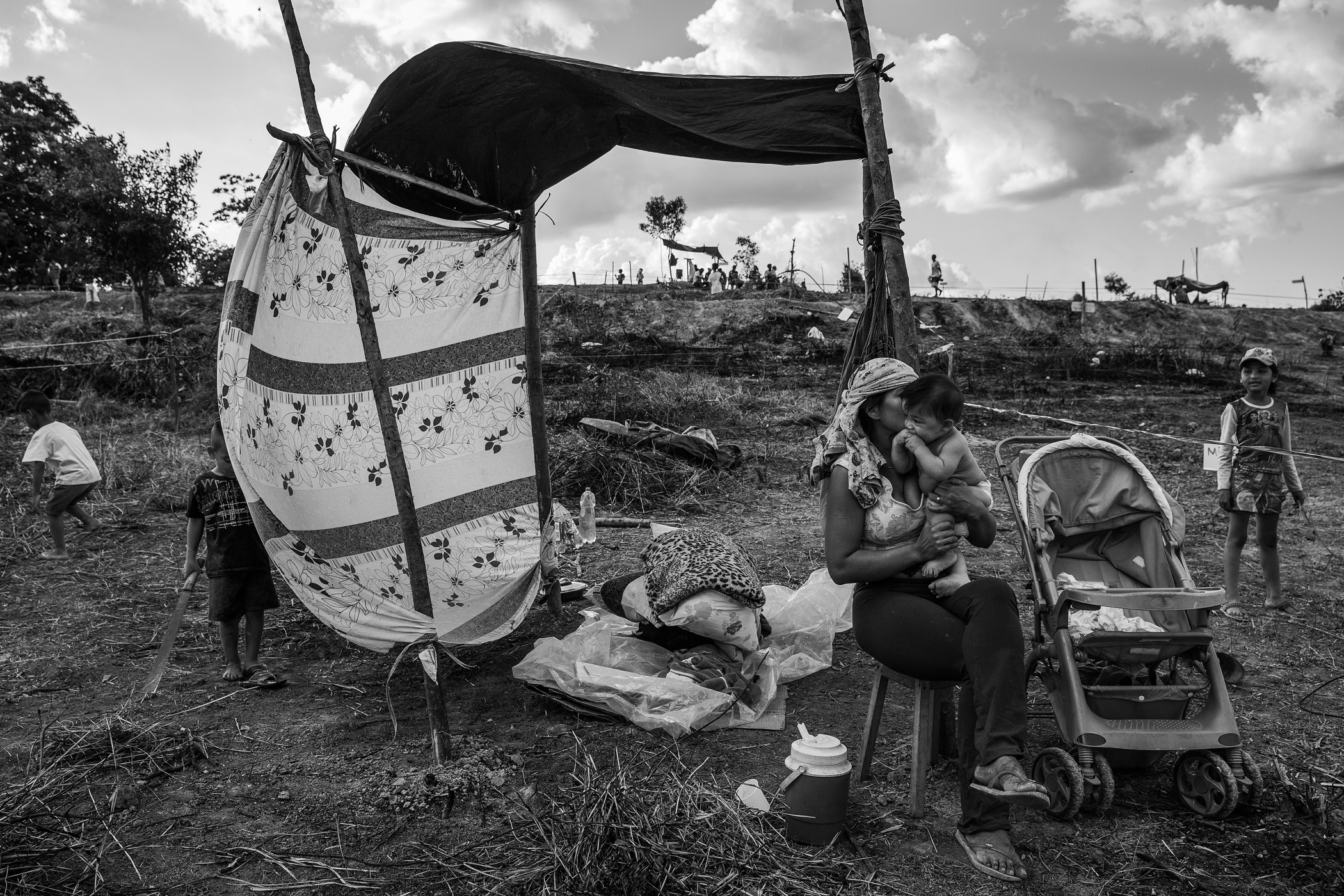
A homeless family builds an improvised shack on squated land invaded by landless people on the outskirts of Manaus, next to the city's Industrial Zone.
Bolsonaro's presidency has overseen a new destructive cycle in the Amazon, leading to around 11,100 square kilometres of virgin forest being cut down between August 2019 and July 2020, according to the National Institute for Space Research, a 9.5% increase over the previous year.
If continued at this rate many believe this will push the rain forest to a tipping point where it will be lost forever triggering further global warming events that will be impossible to reverse.
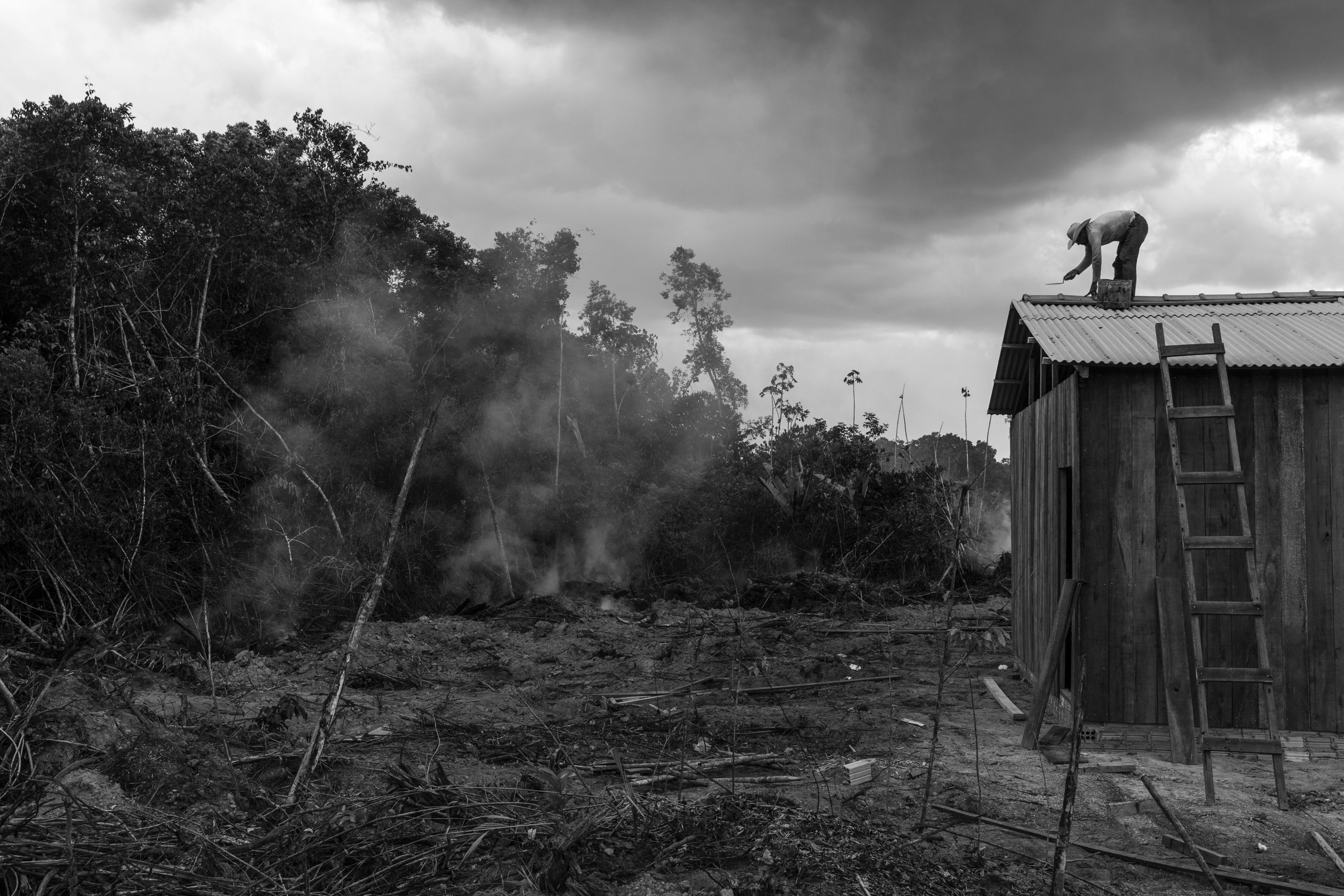
Settlers build a house on a newly deforested plot of land alongside the BR-319 road near the village of Realidade.
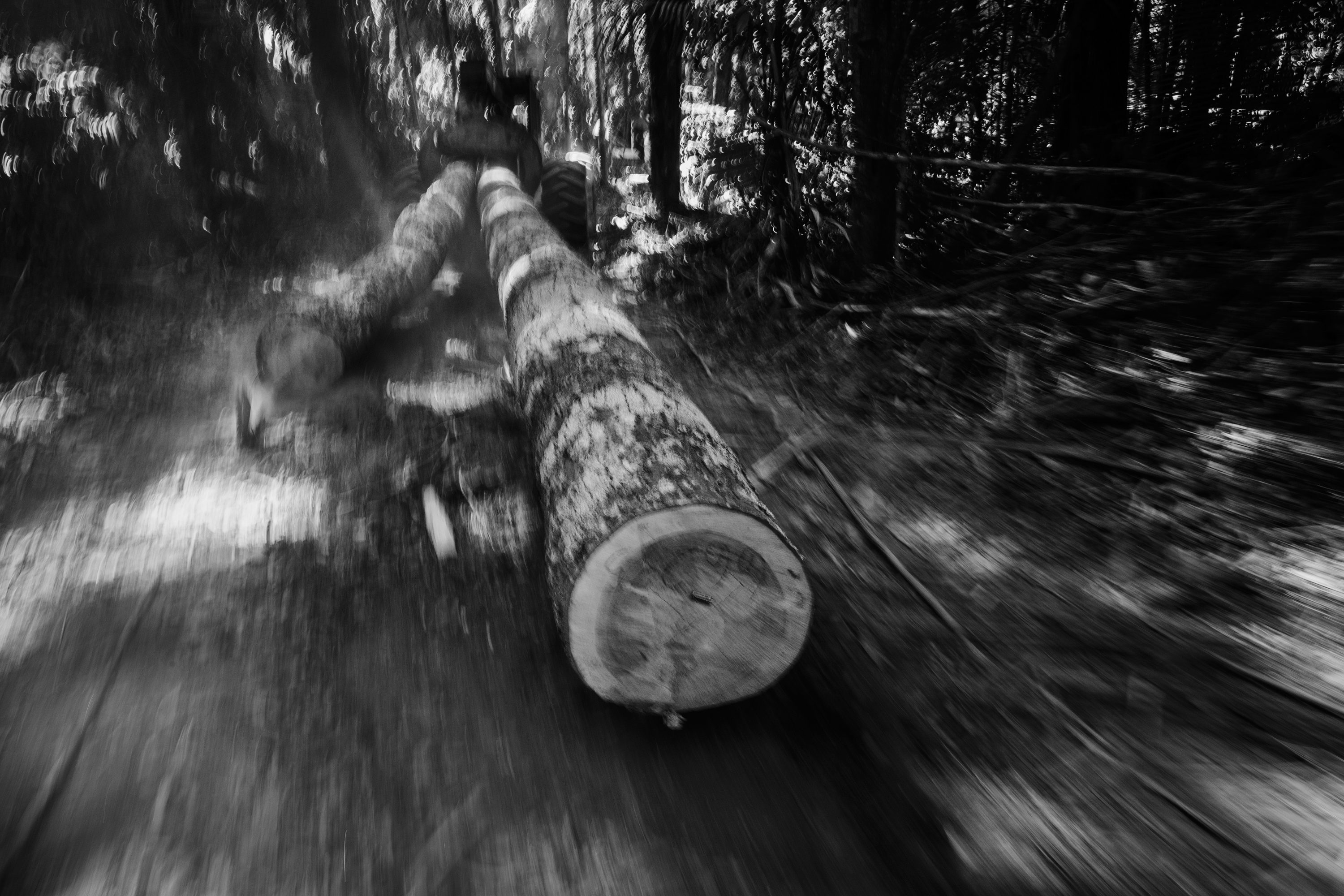
A forest tractor hauls a log in the Jamari National Forest.
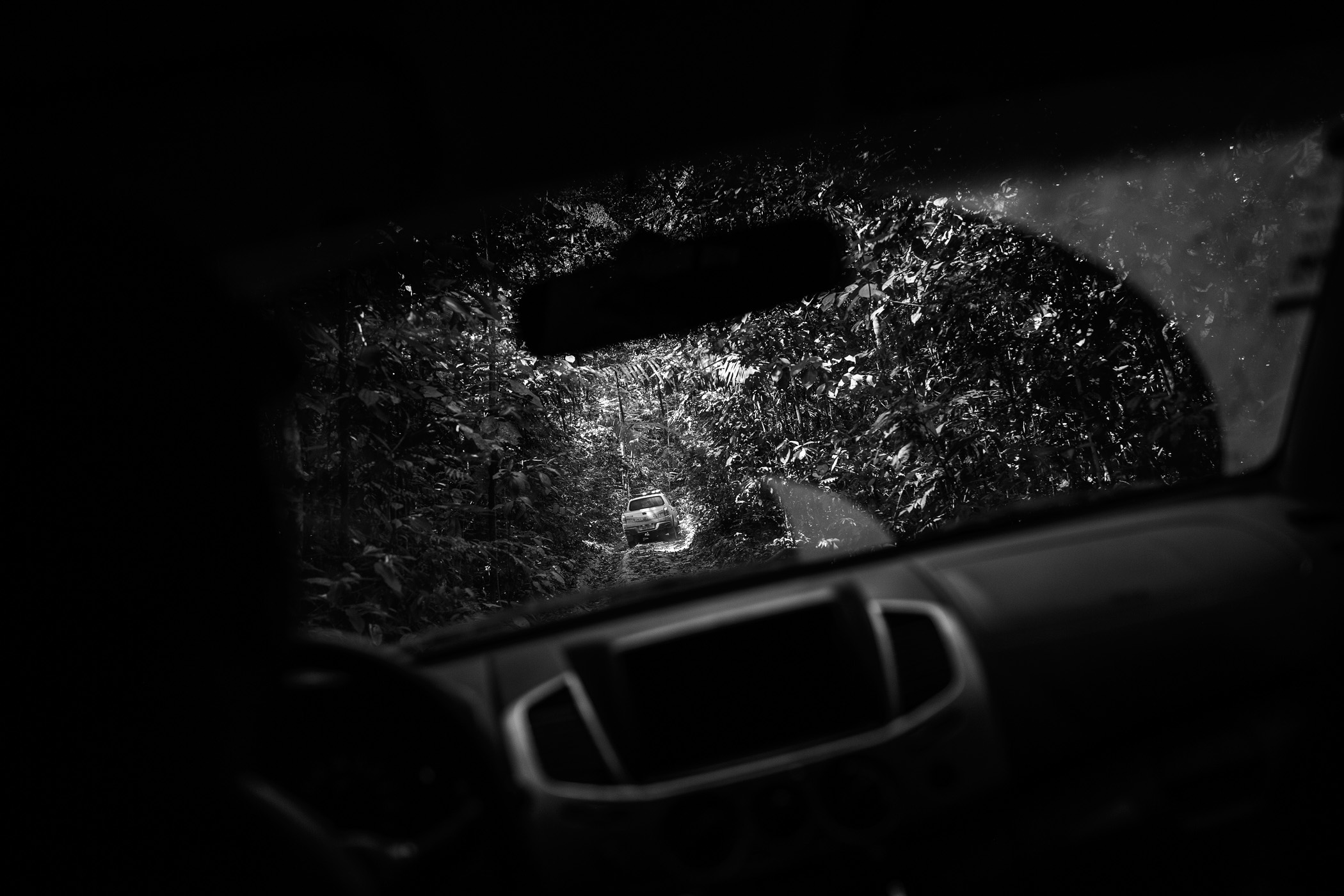
A vehicle of the military environmental police drives along a clandestine road inside the Bom Futuro National Forest in search of illegal logging.
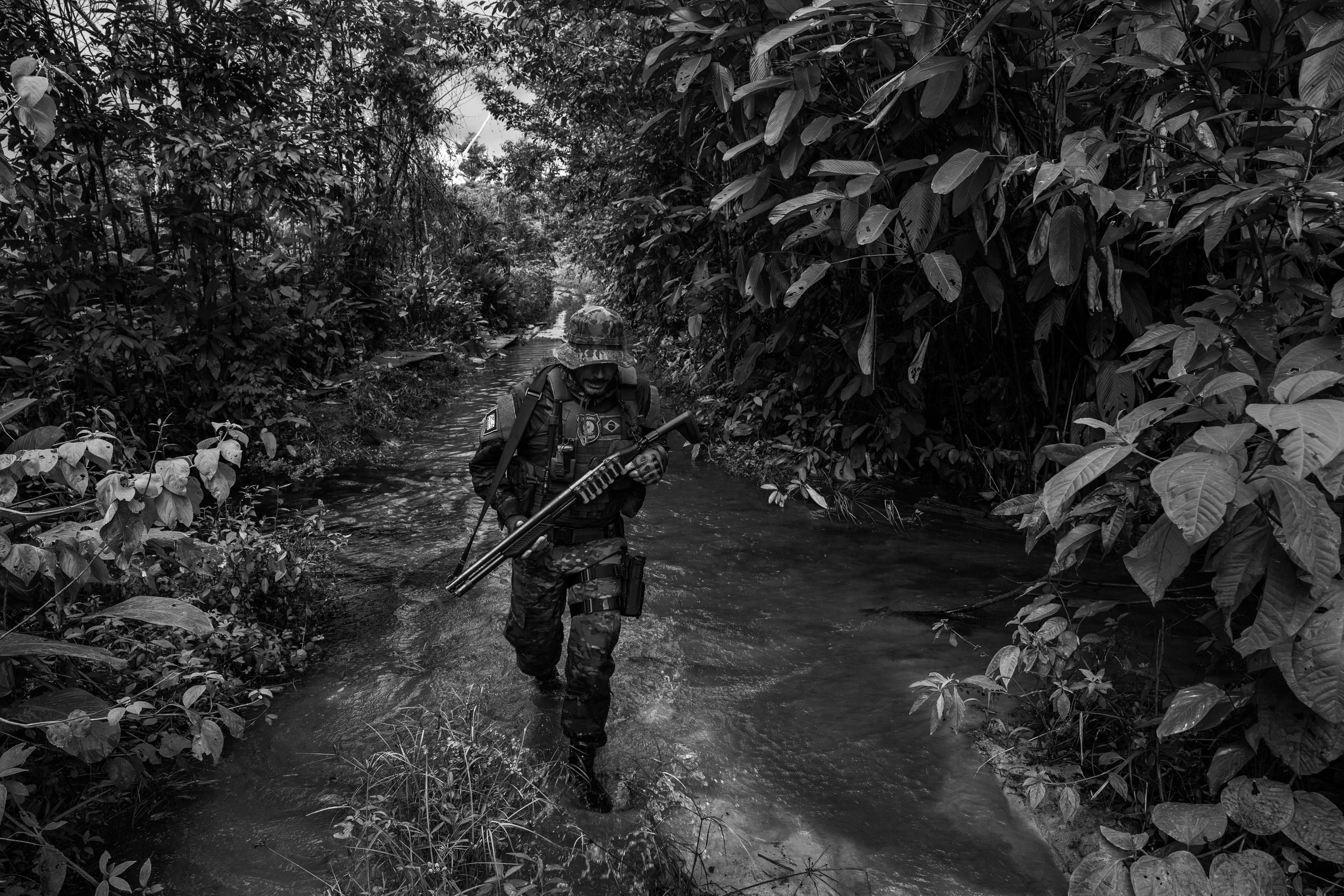
A member of the Specialized Inspection Group (GEF) , a part of IBAMA (Brazilian Institute of the Environment and Renewable Natural Resources), Brazil's environmental protection agency, searching for illegal logging activity in the Alto Turiacu Indian Territory.
A truck driven by minors and loaded with illegal timber extracted from Cachoeira Seca Indigenous Land, is apprehended by IBAMA agents ( Brazil's environmental protection agency) on the Trans-Amazonian Highway.
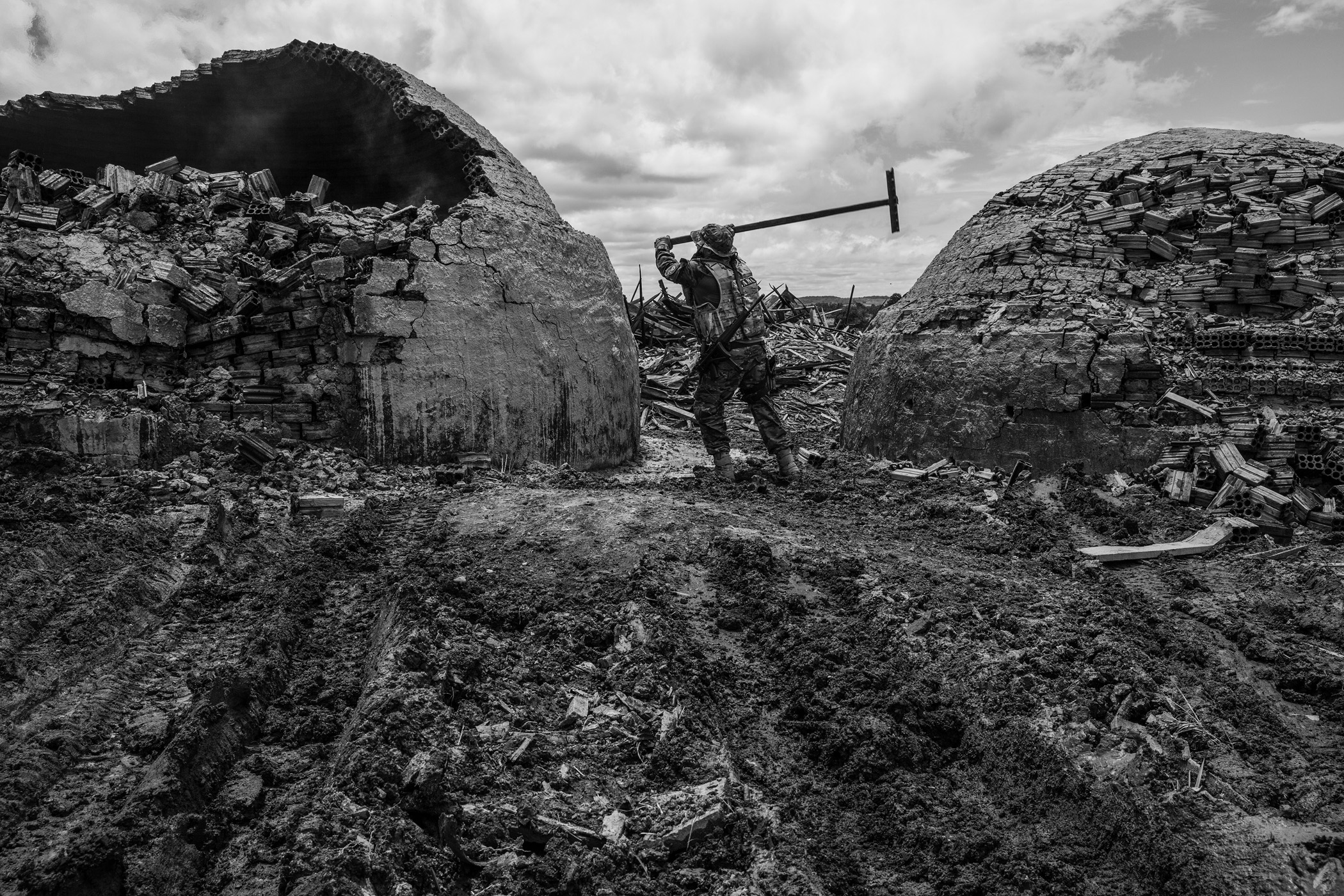
A member of the Specialized Inspection Group (GEF) , a part of IBAMA, Brazil's environmental protection agency, destroys brick furnaces that were used to make charcoal at an illegal sawmill.
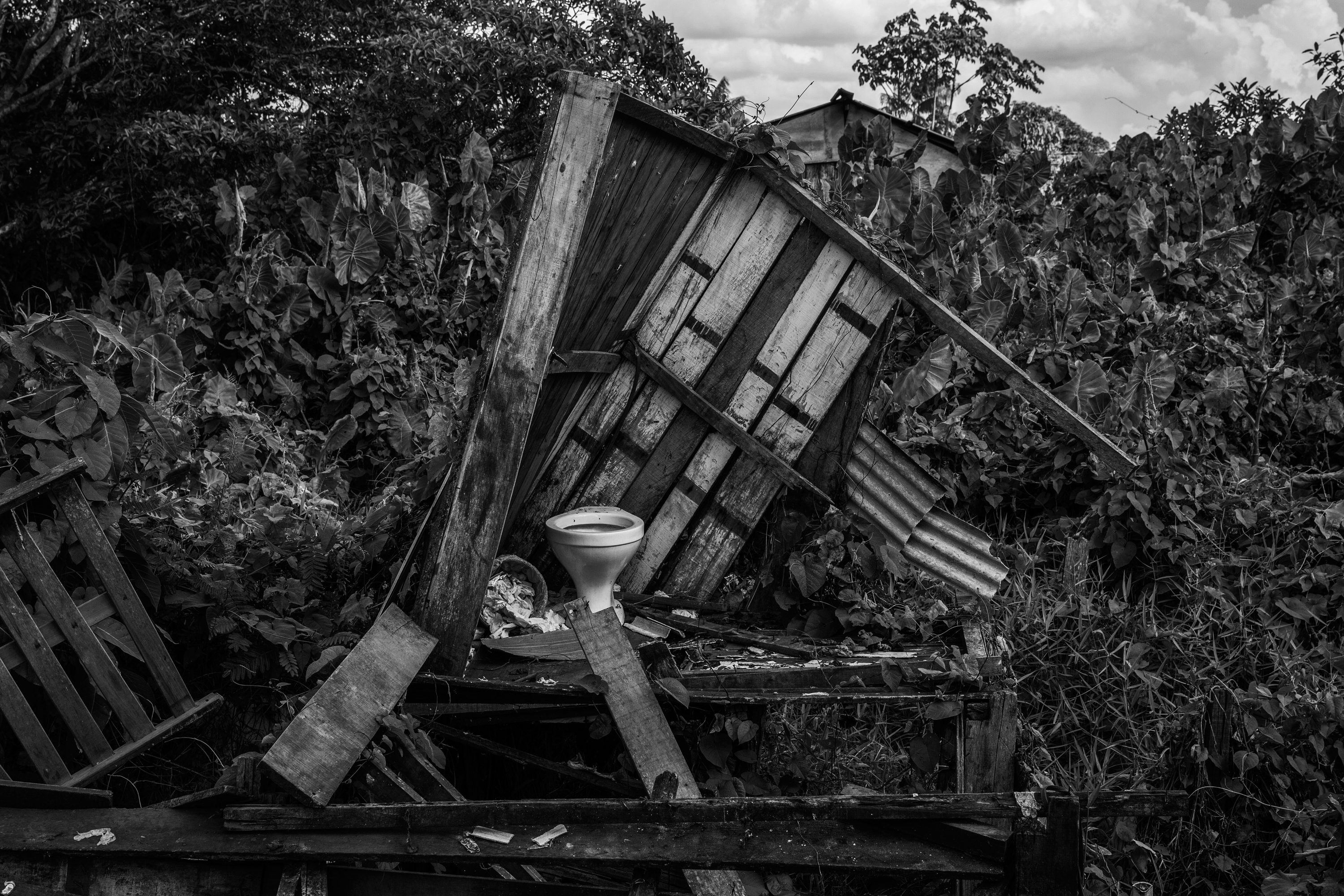
A destroyed shack close to the Igarape (creek), Altamira that was once home to a family since removed to a new settlement built to relocate the population dislodged as a result of the Belo Monte hydropower dam construction on the Xingu River.
Stray dogs stare at meat hanging in a butcher's shop in Vila da Ressaca, an area previously mined by gold prospectors but now almost completely abandoned. Altamira, Pará State, Brazil. © Lalo de Almeida/Panos Pictures

